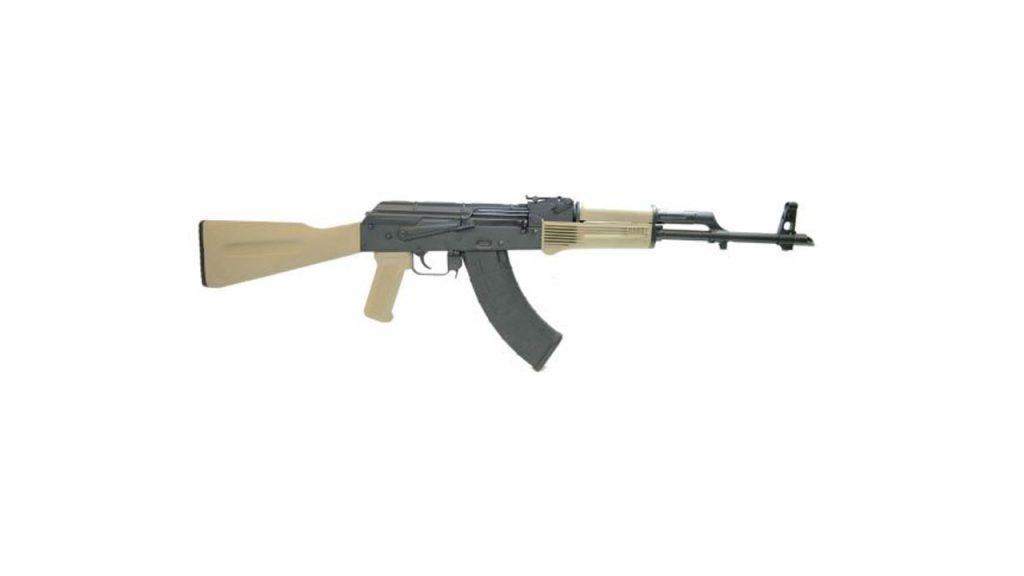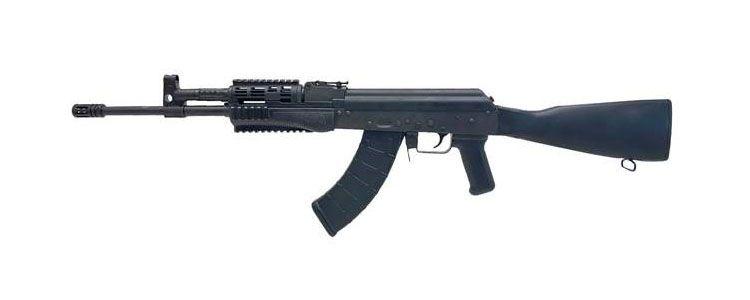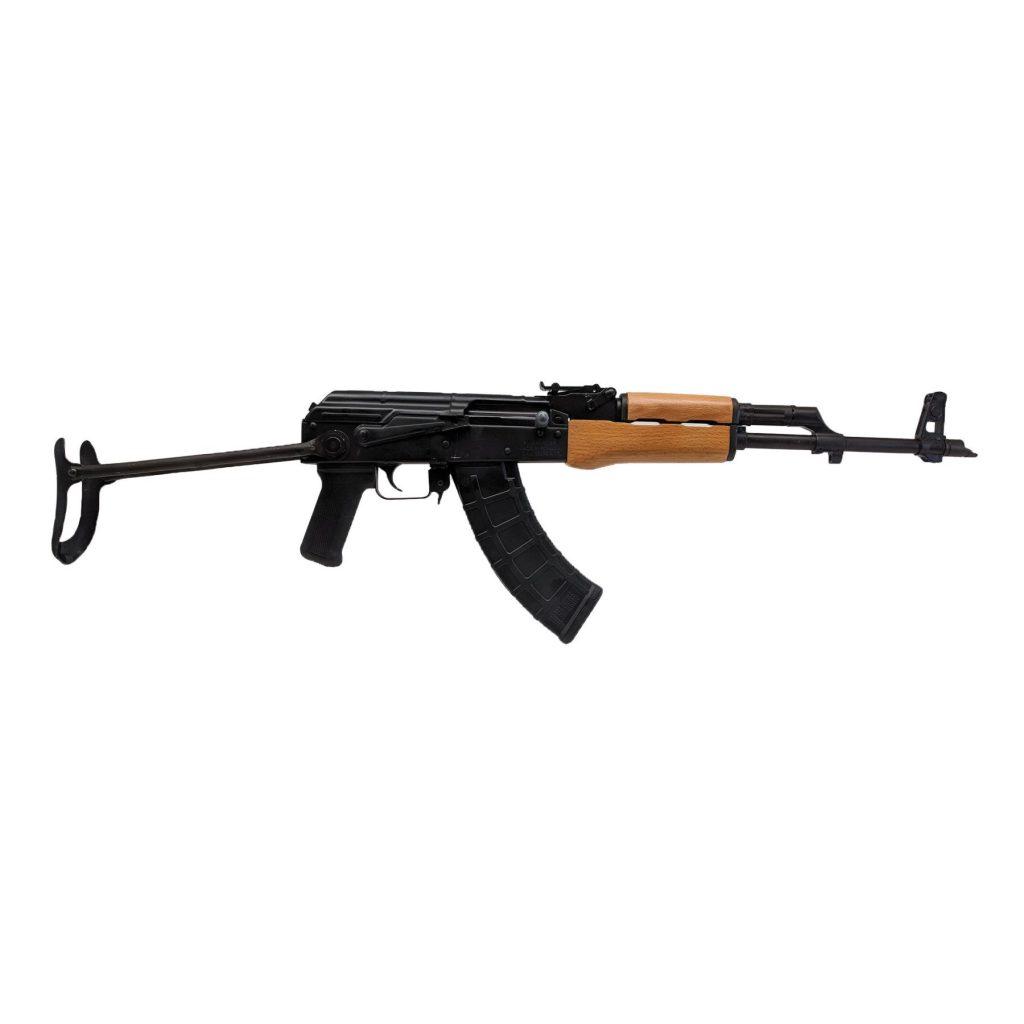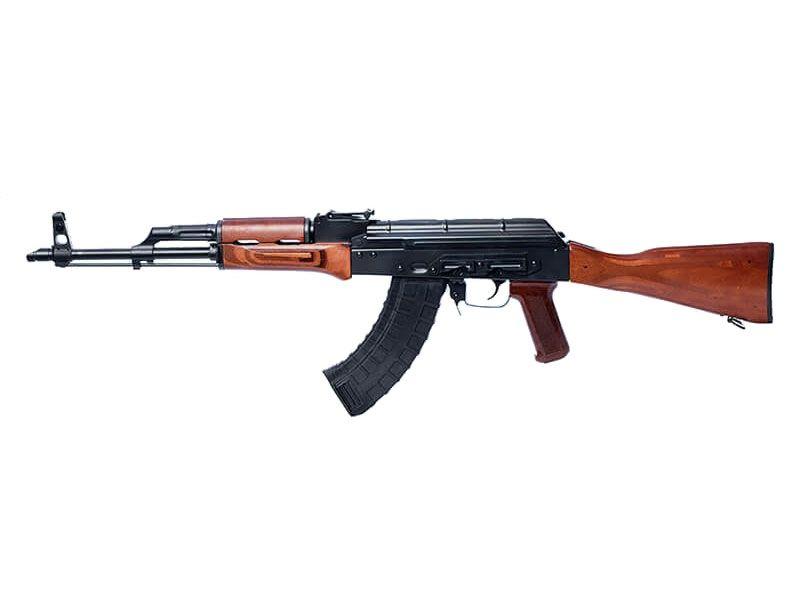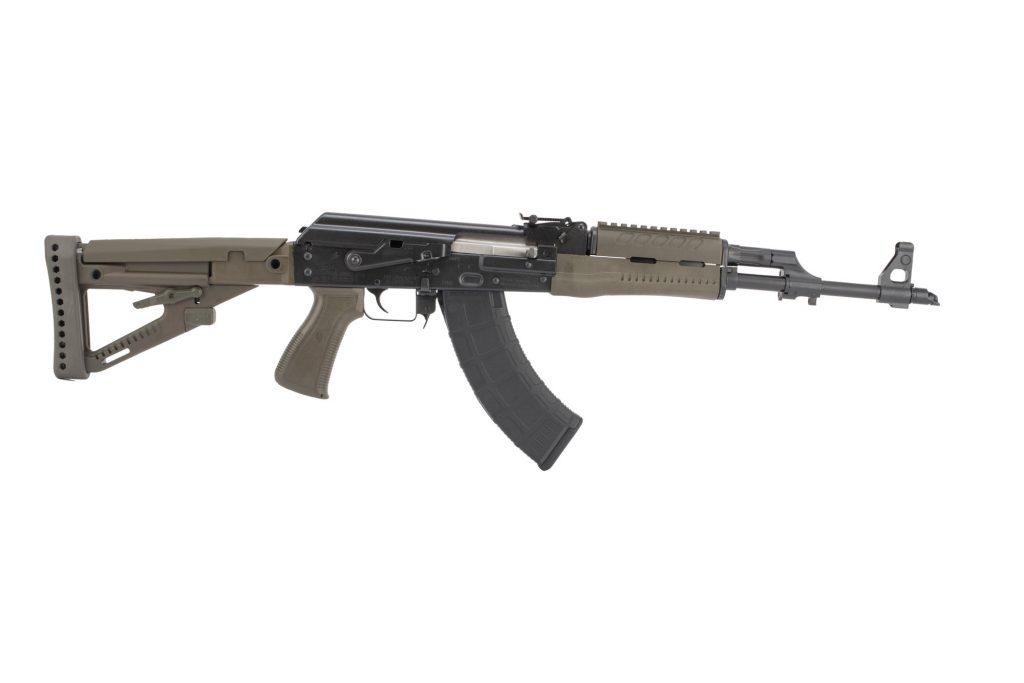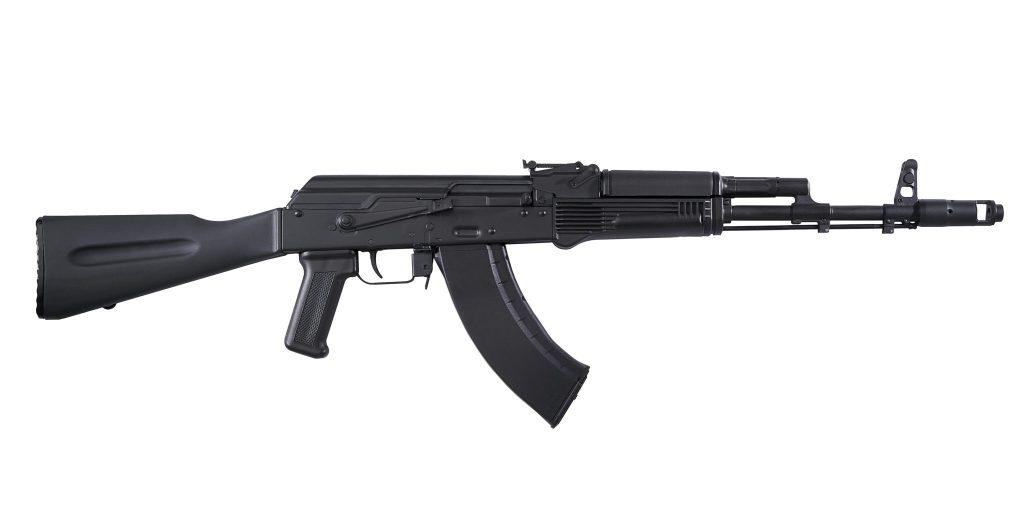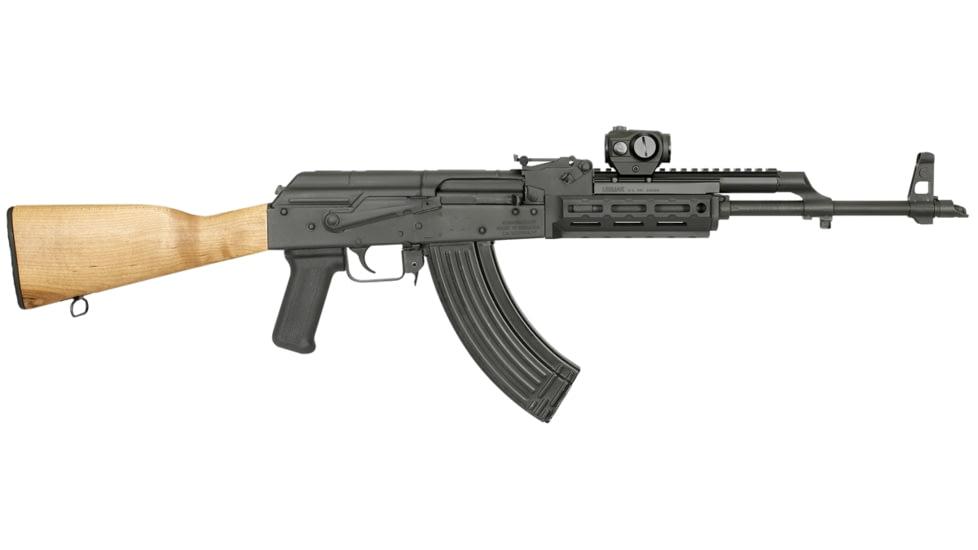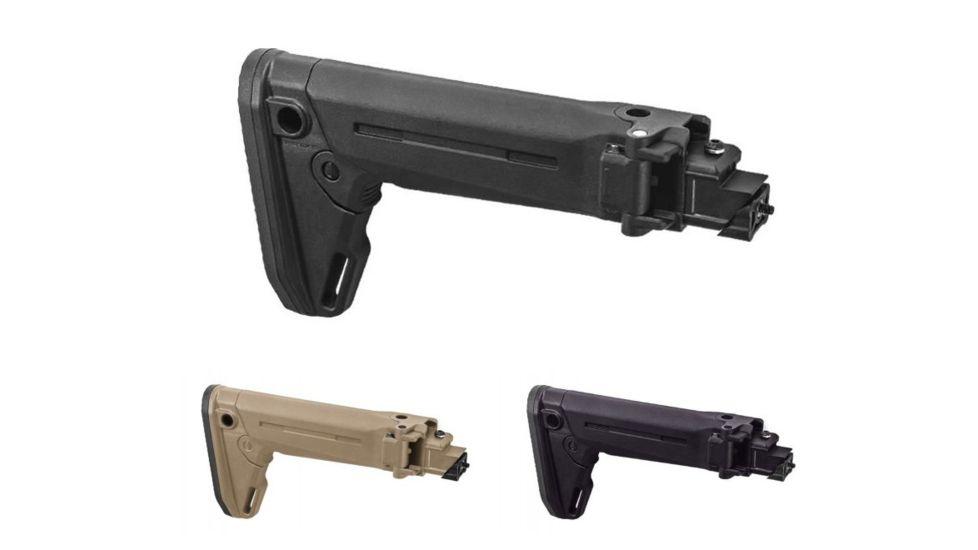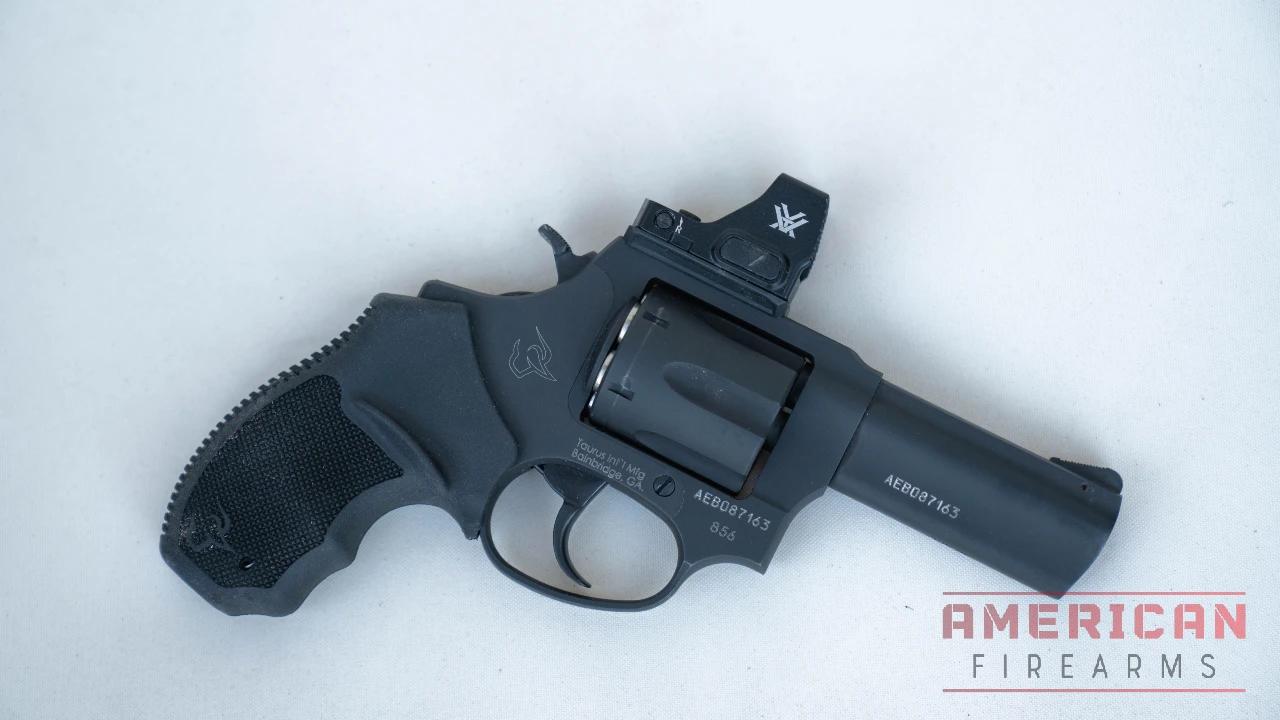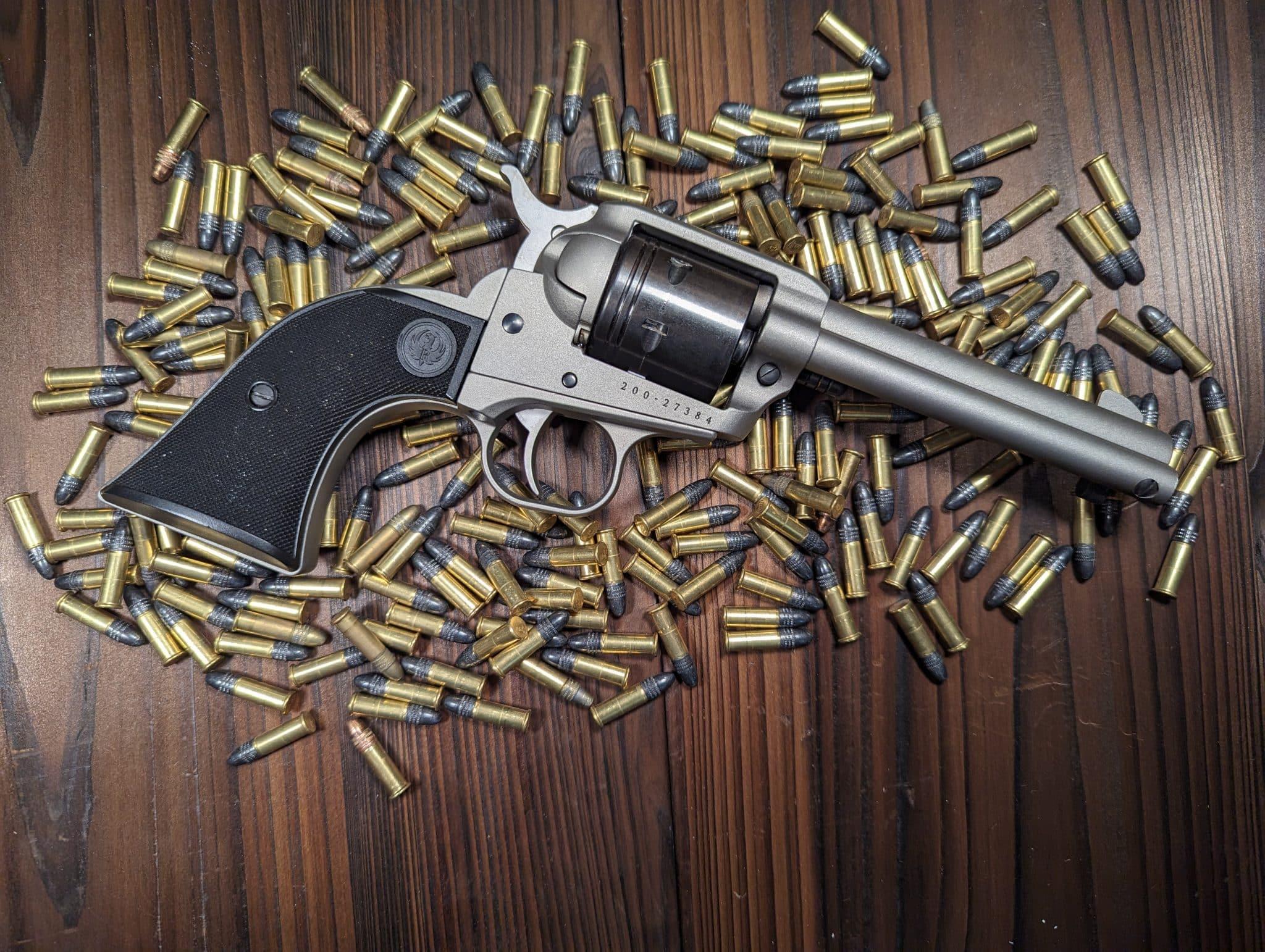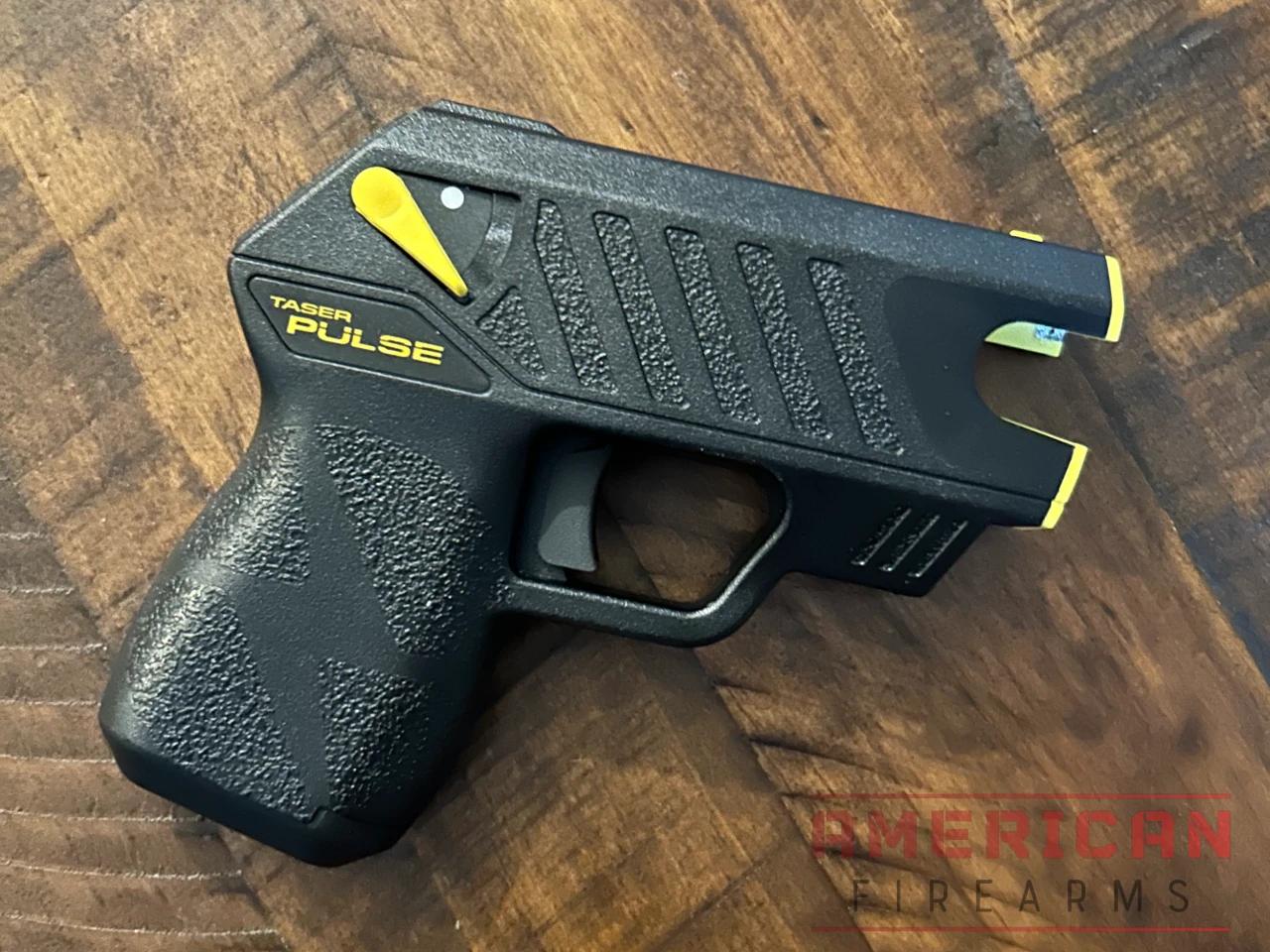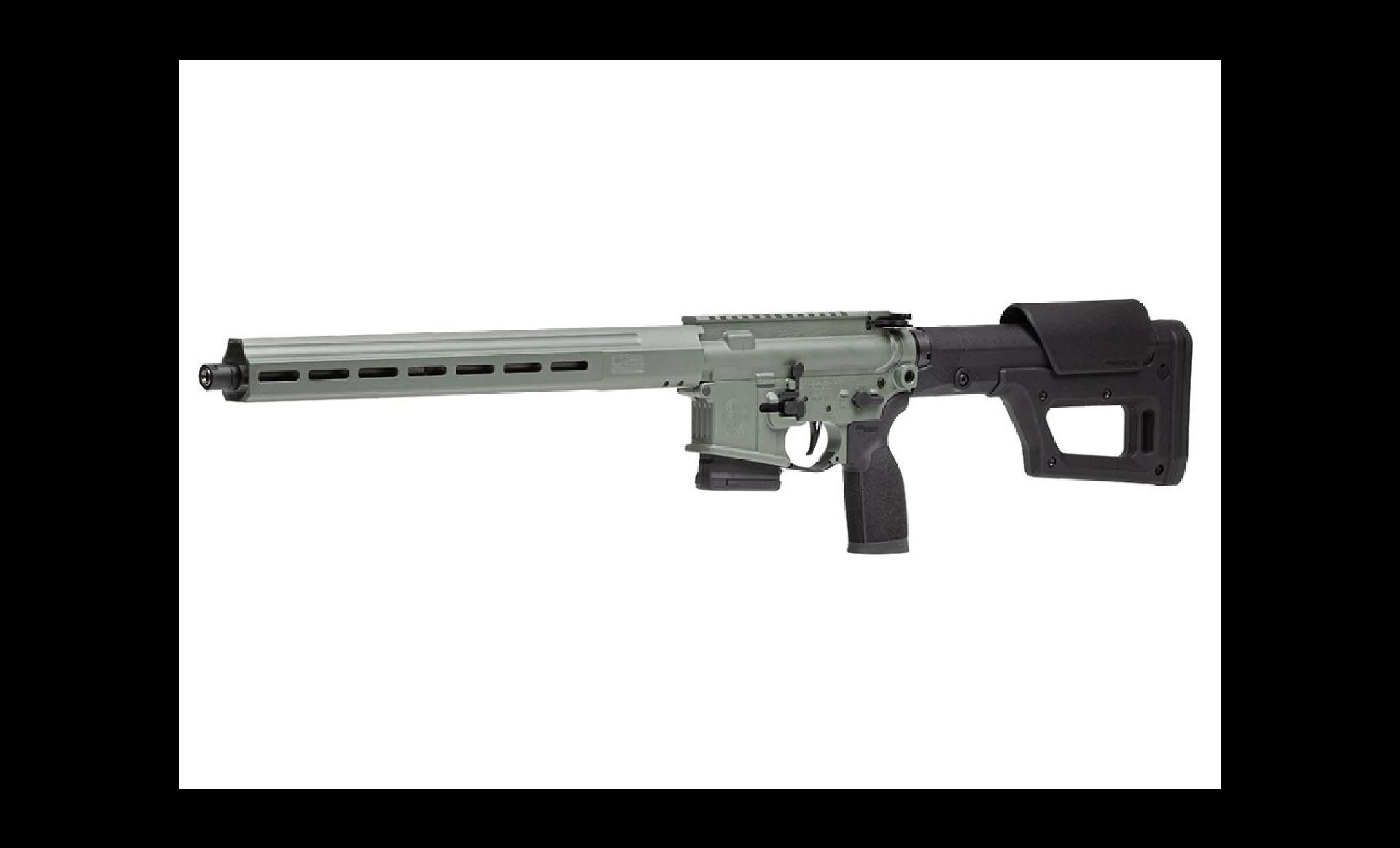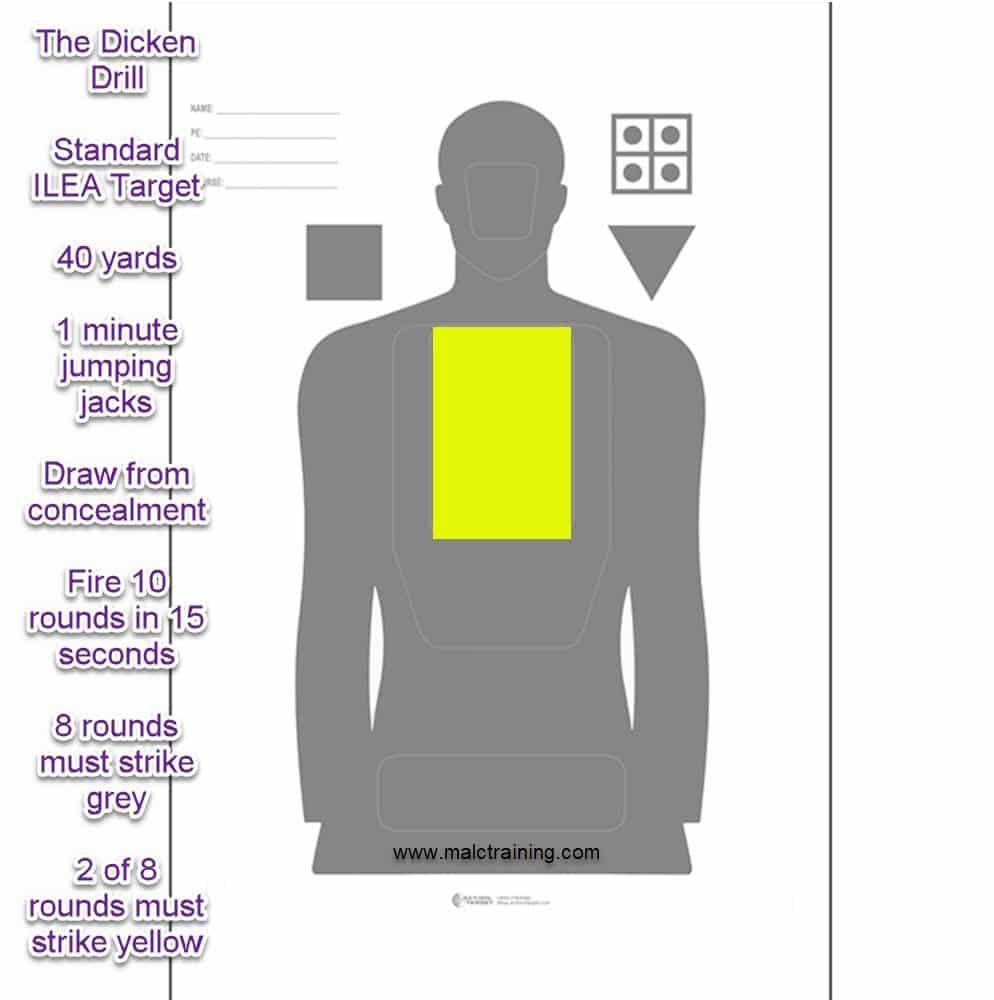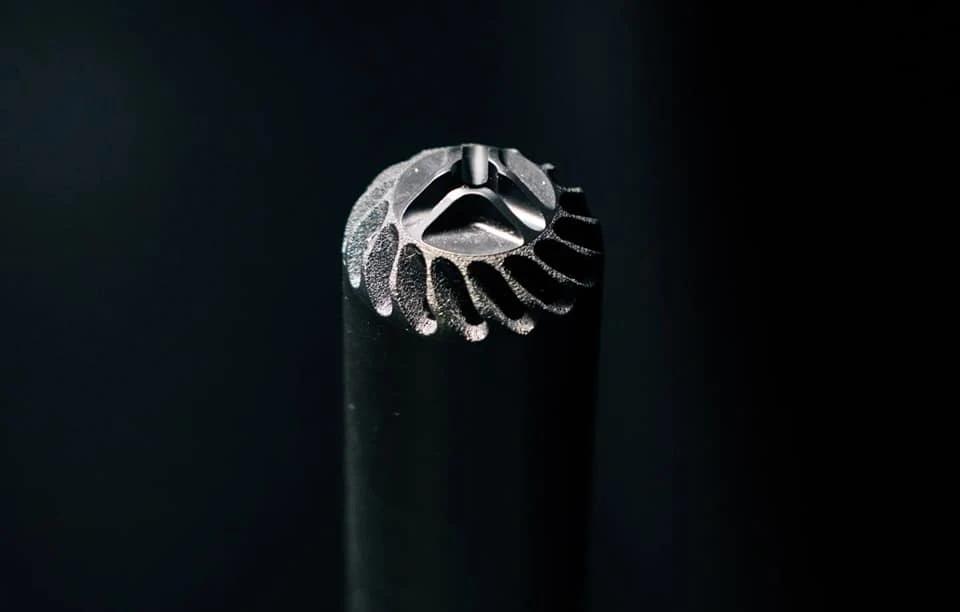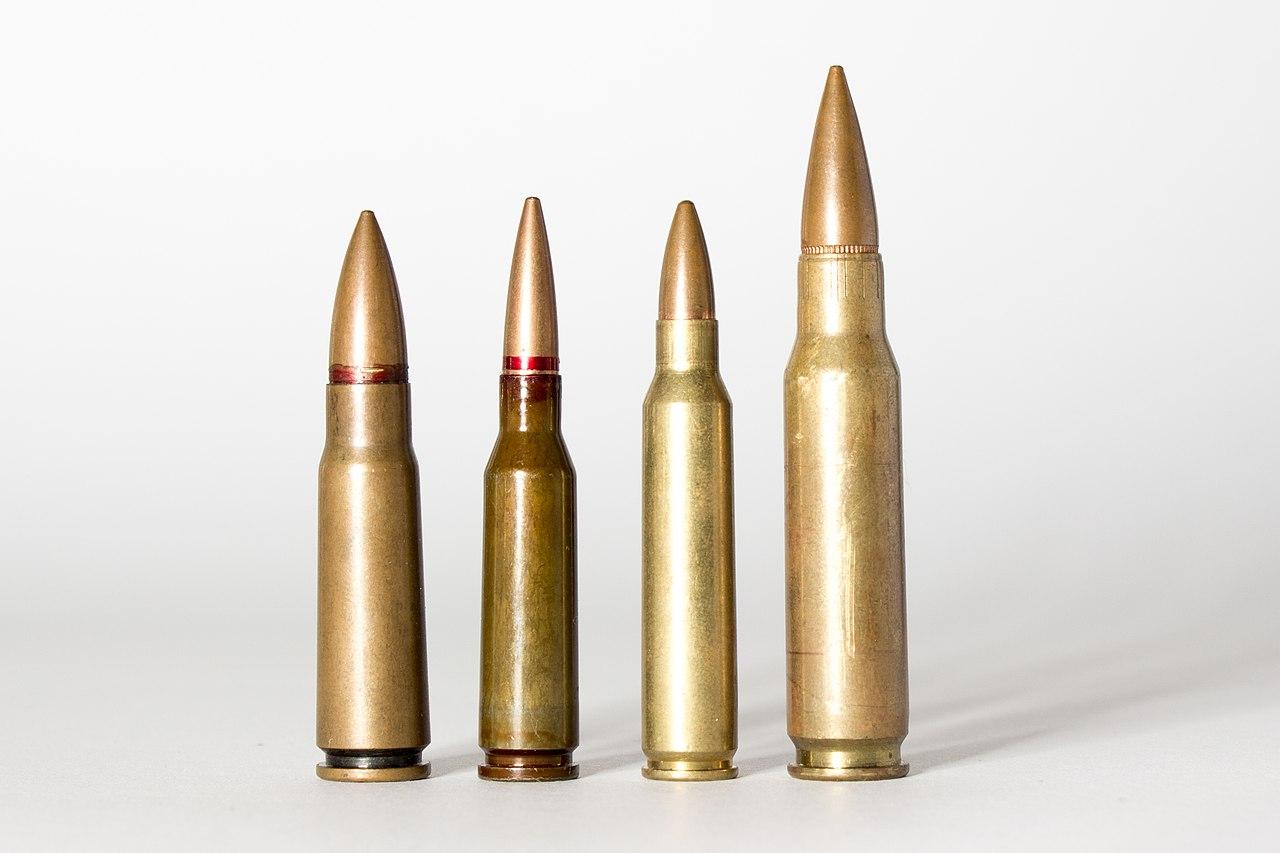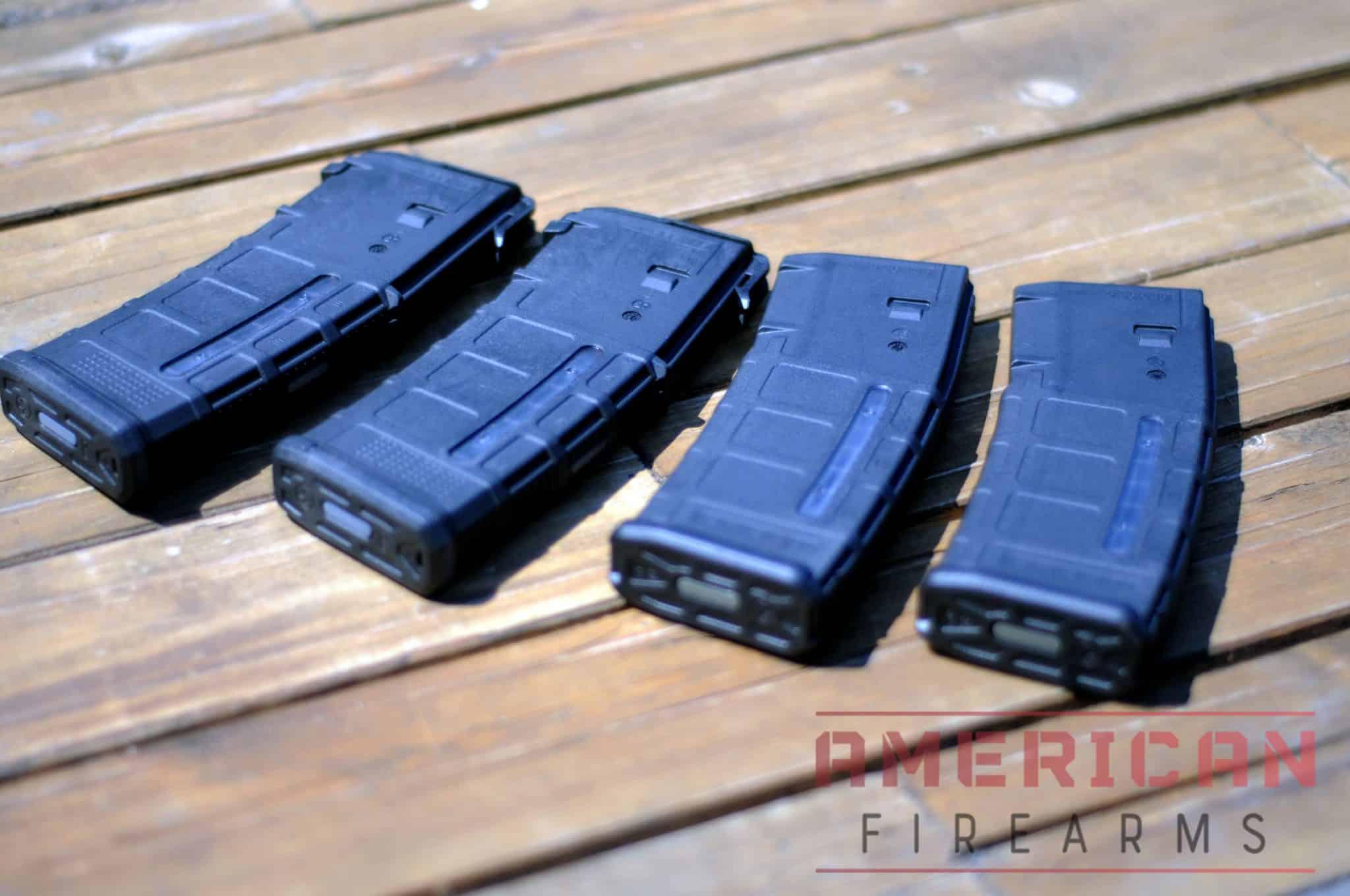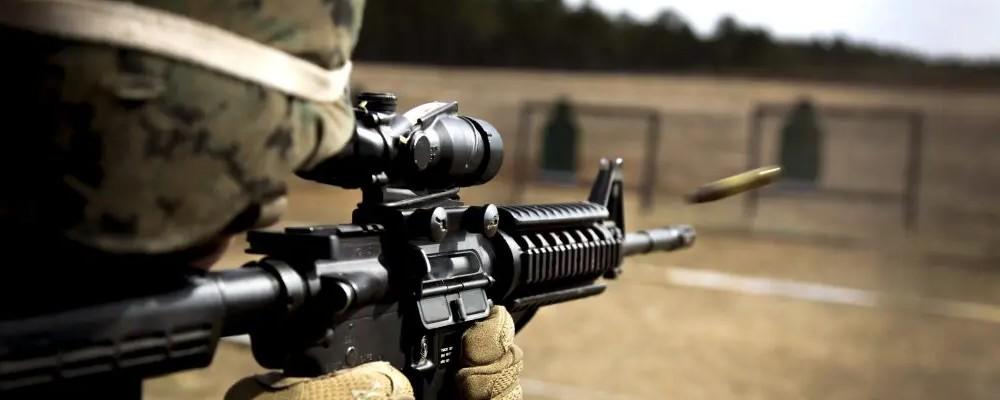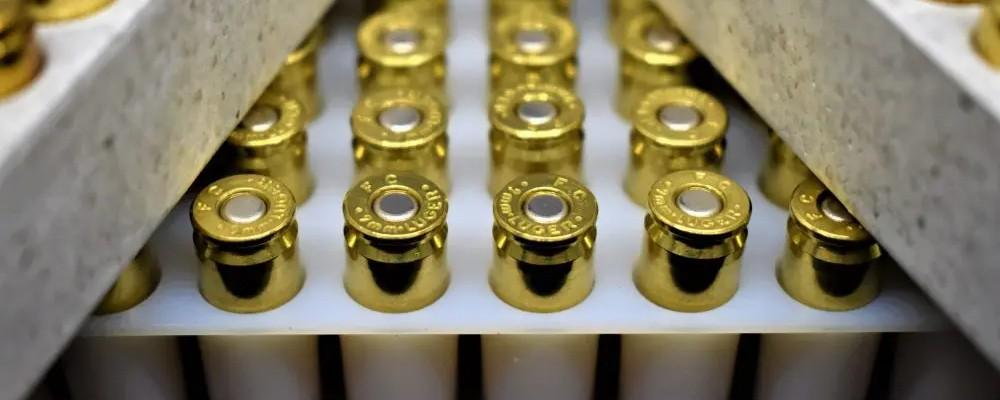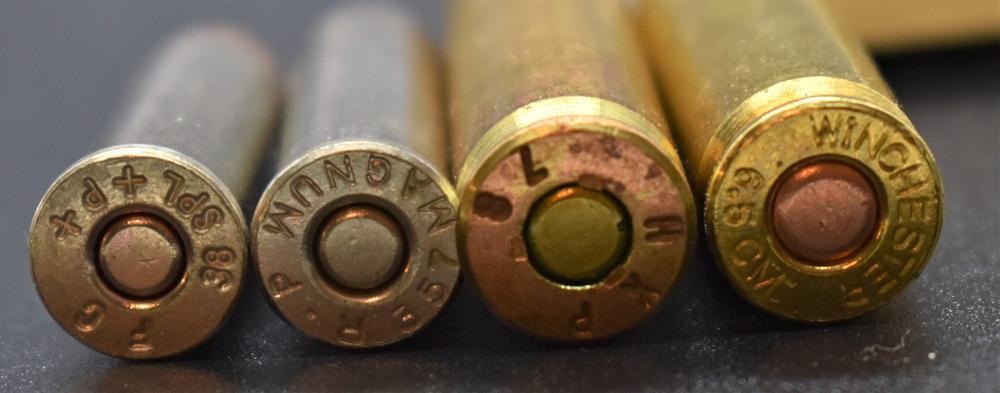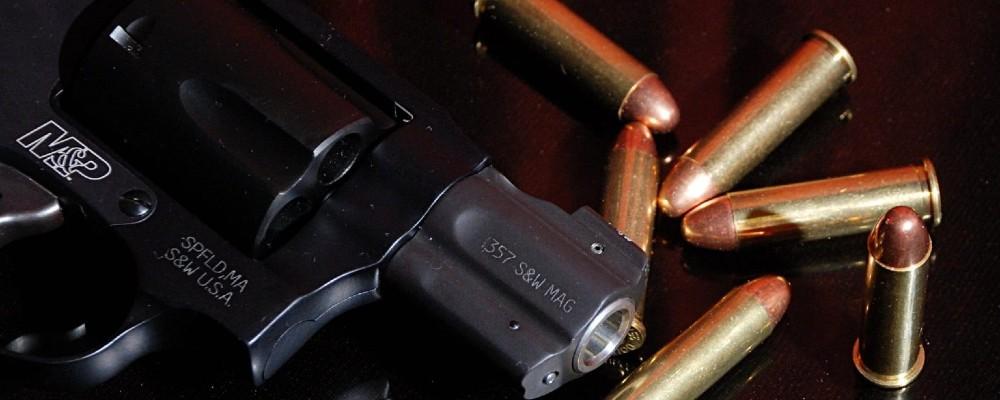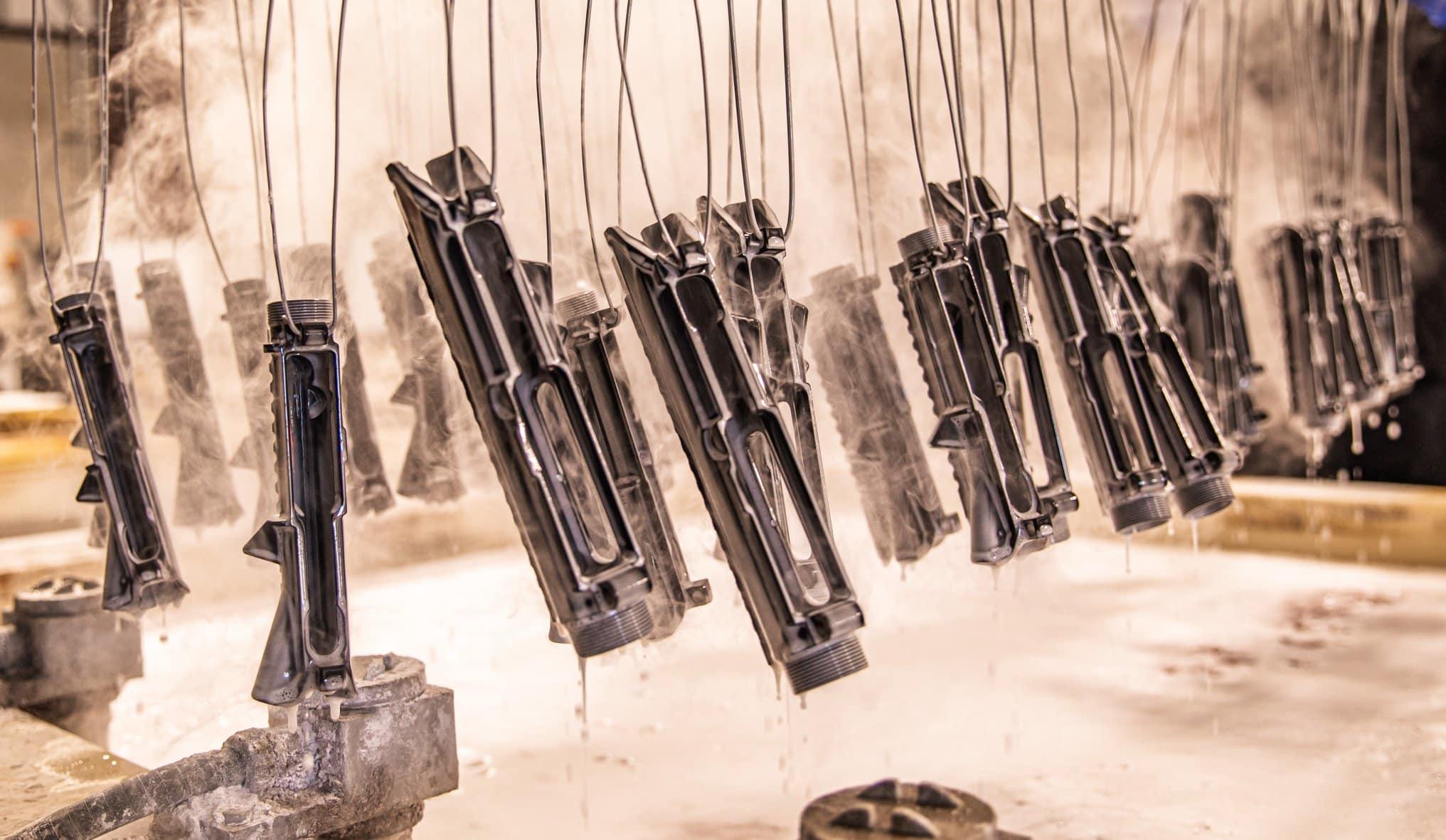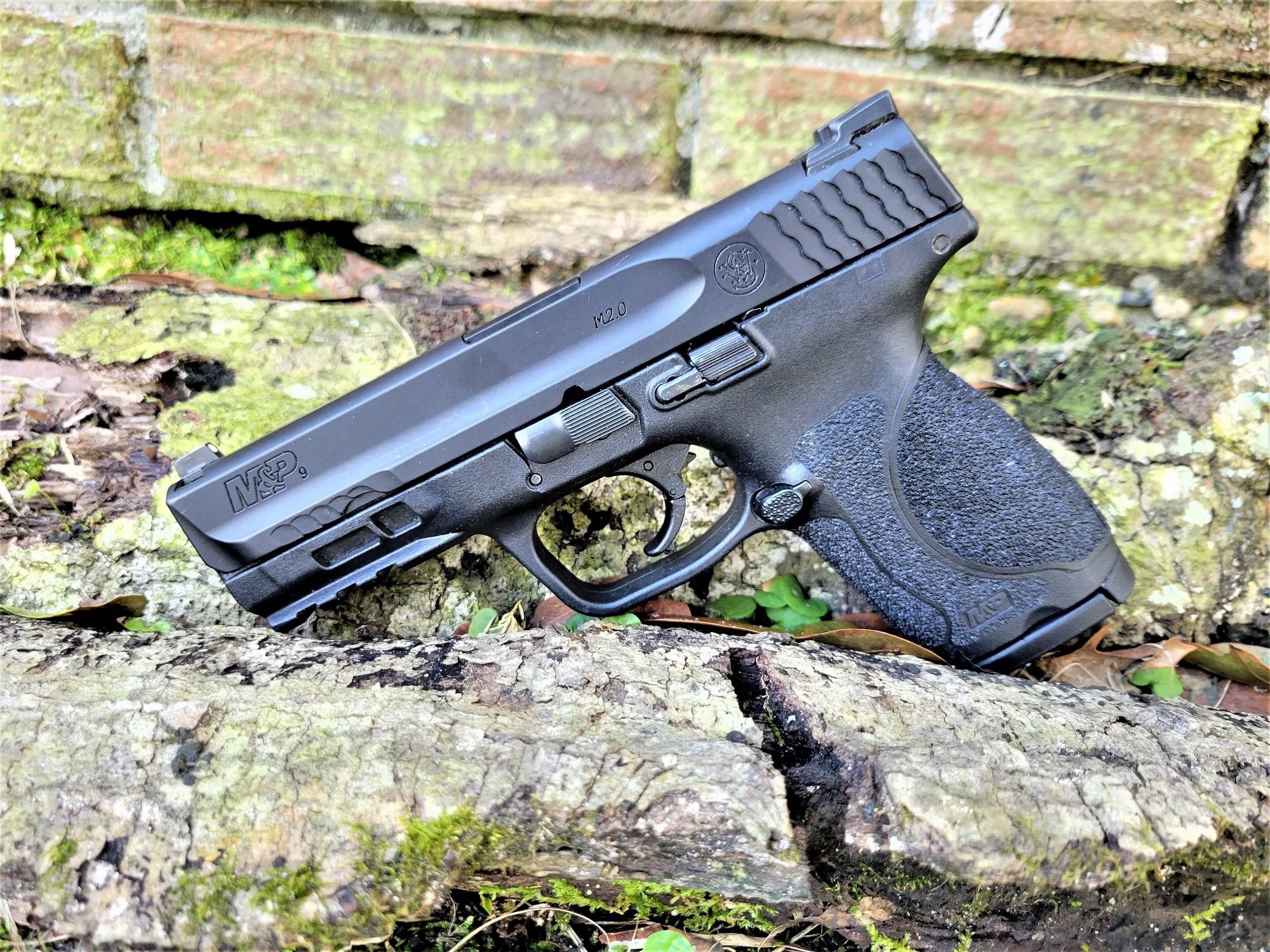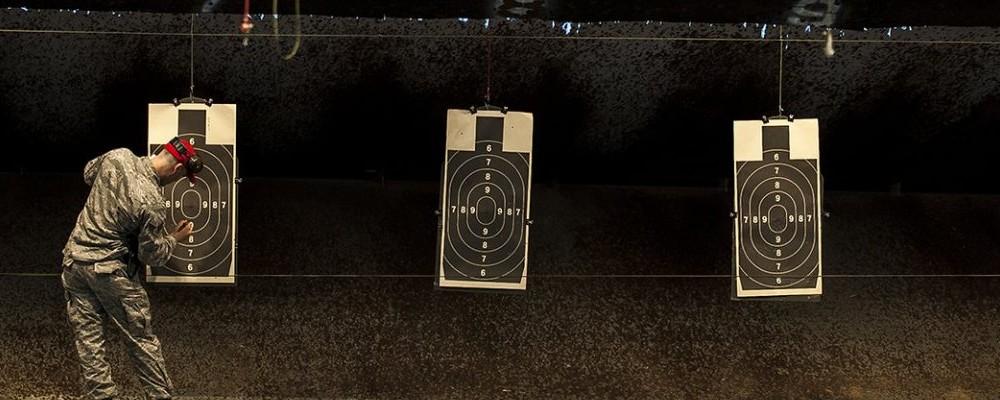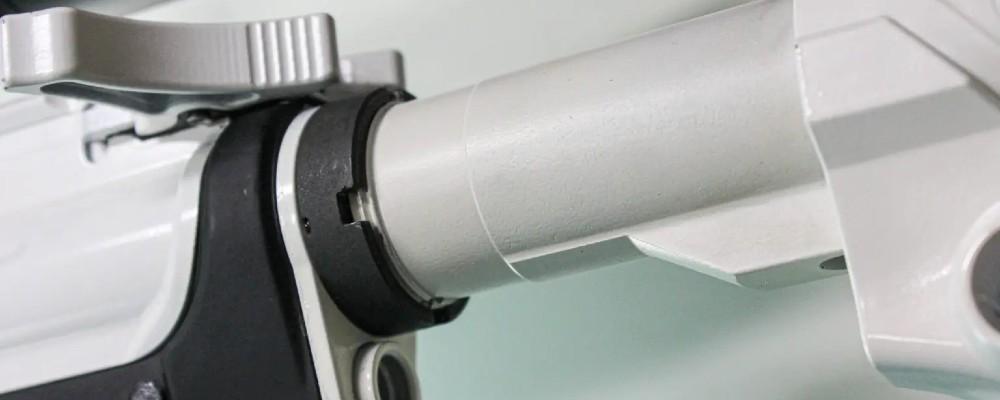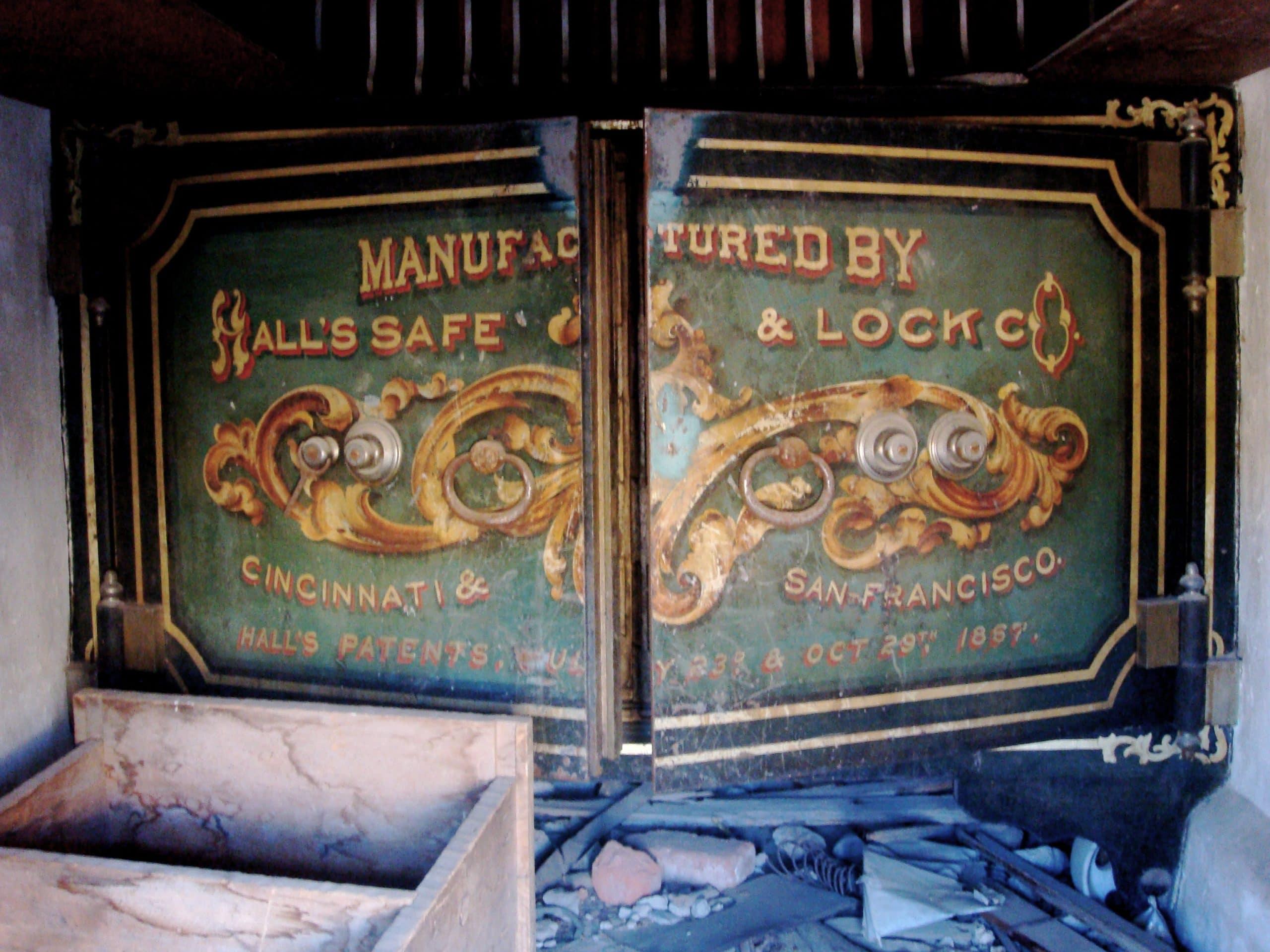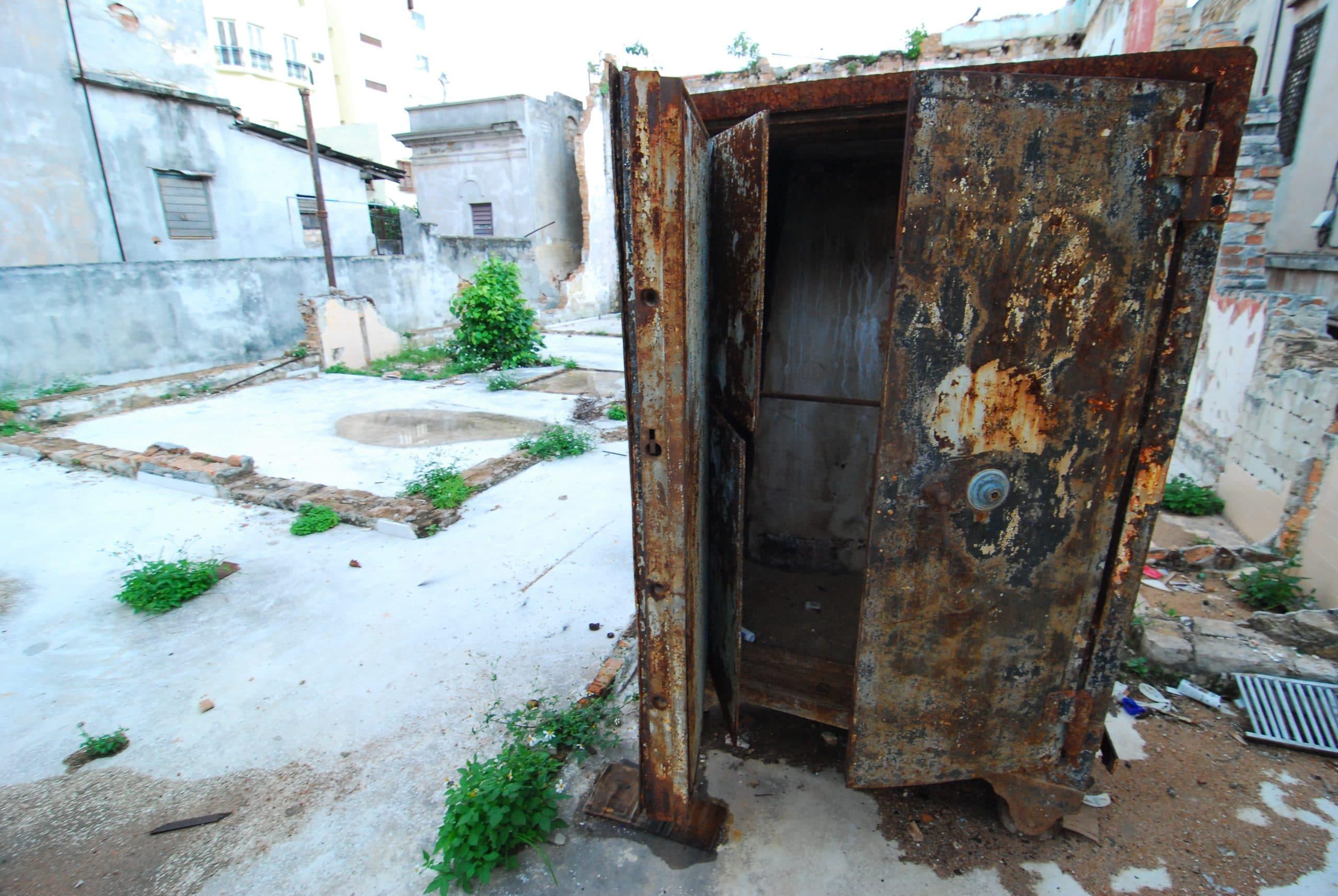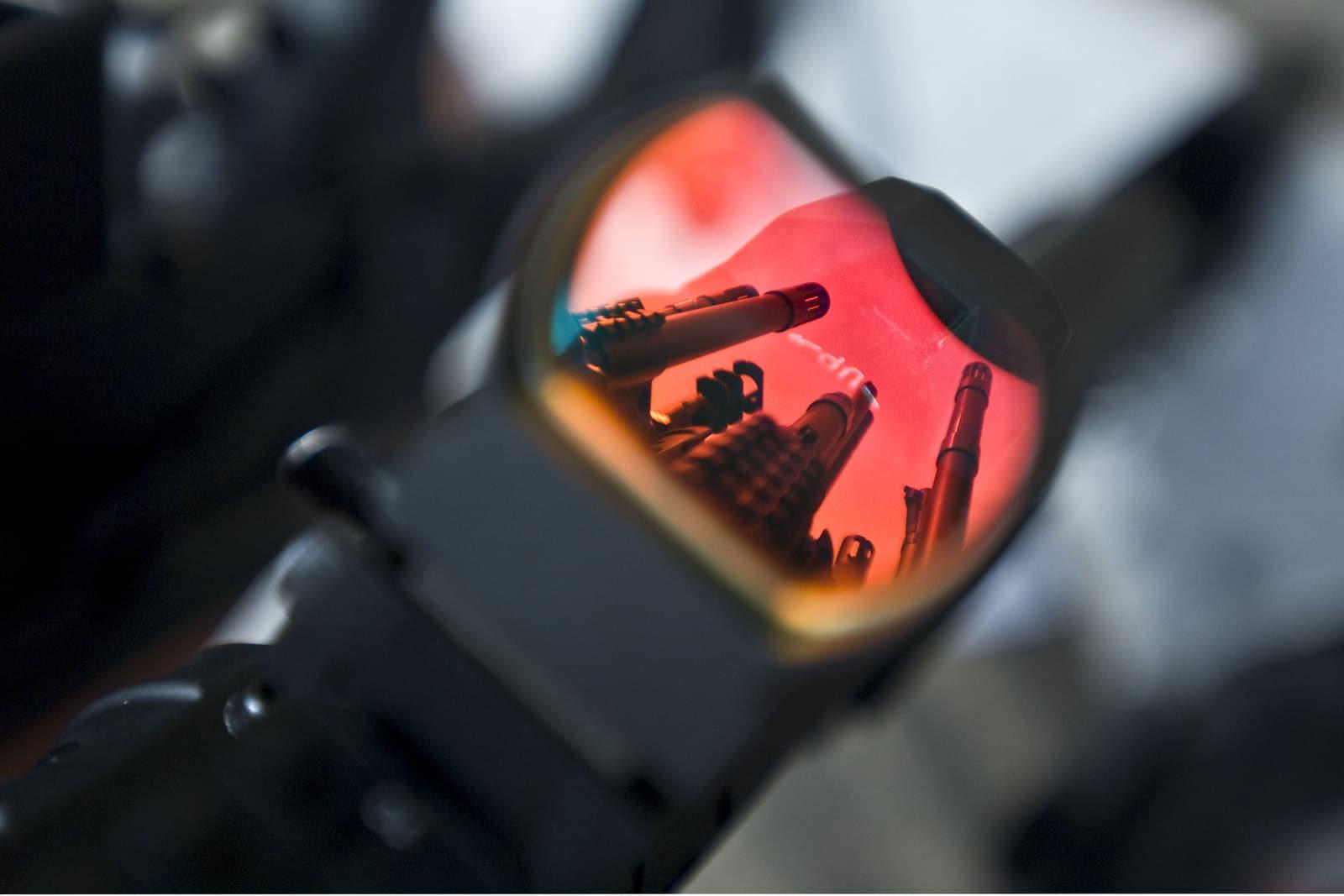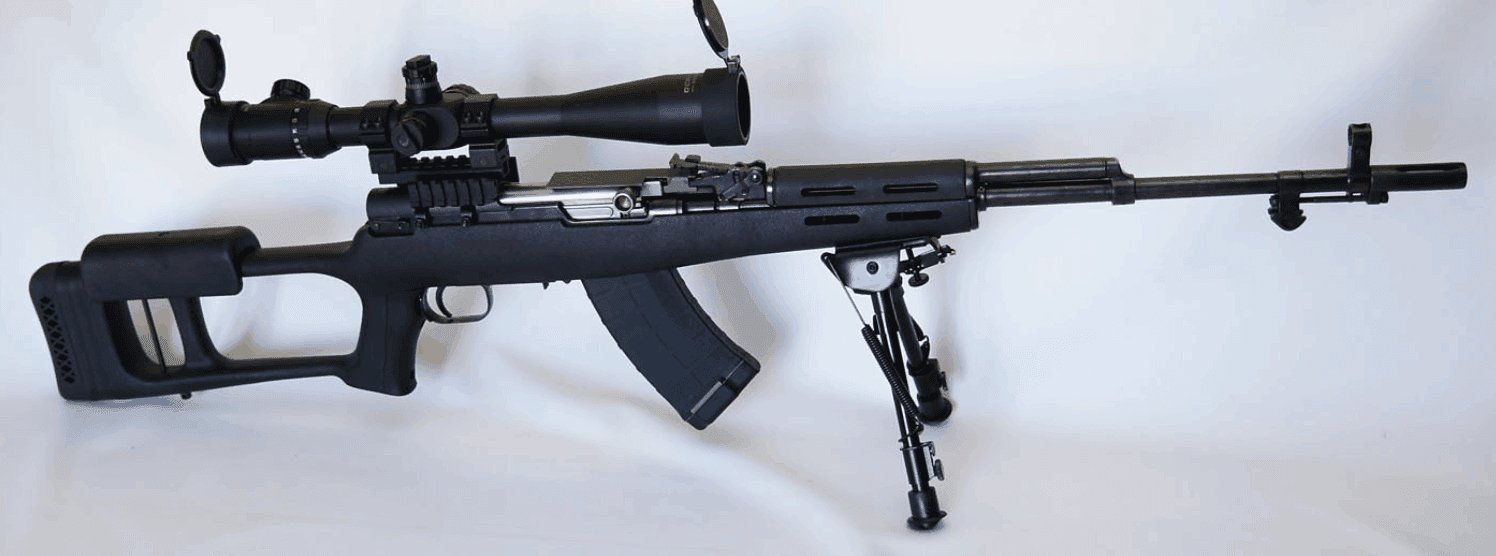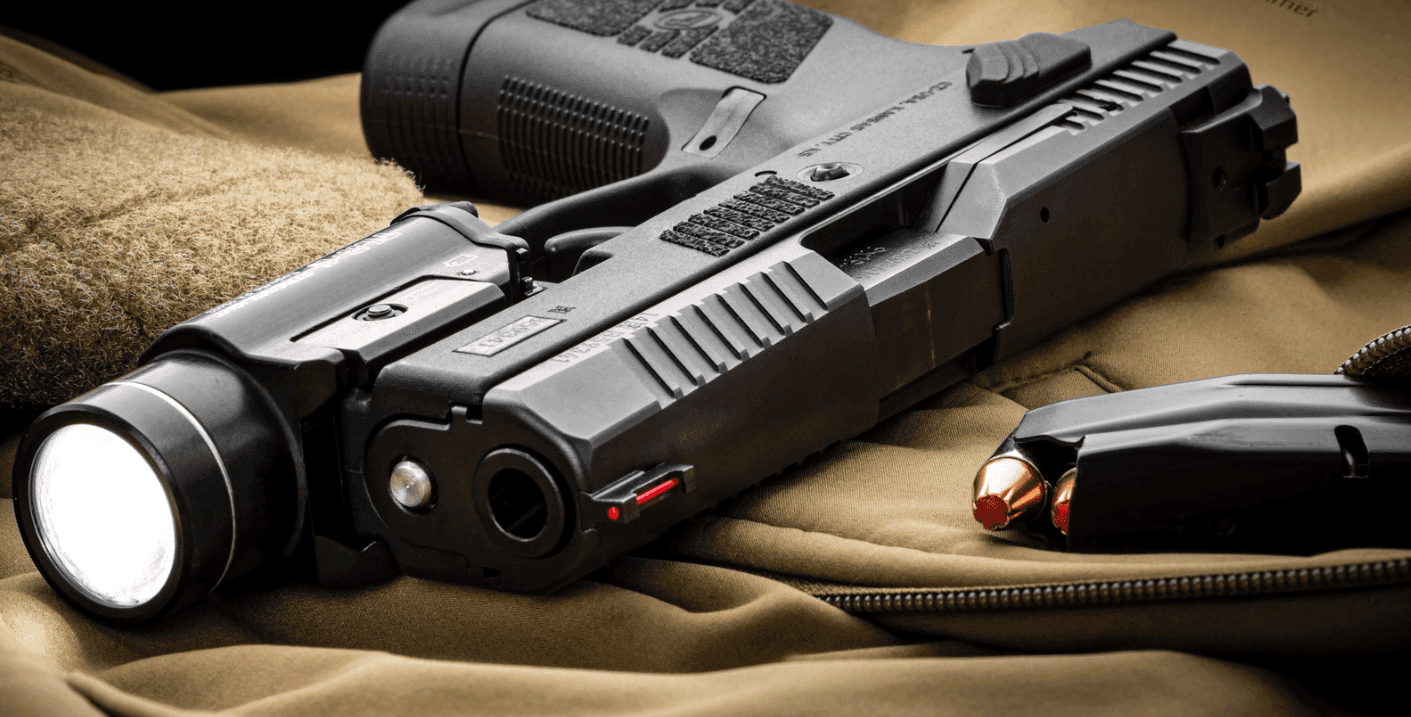AK-47 Rifle Shootout: Finding the Right Kalash for You
One of the most iconic and ubiquitous rifles in the world, a quality Kalash can be everything from a reliable hunting workhorse to a modern combat rifle -- or just a classic fun piece of firearm history. Here are our top AK-47 rifles for any need.
Written By
Michael Crites
Licensed Concealed Carry Holder
Reviewed by
Editorial Team
Learn About The Editorial Team
Share:
Products are selected by our editors. We may earn a commission on purchases from a link. How we select gear.
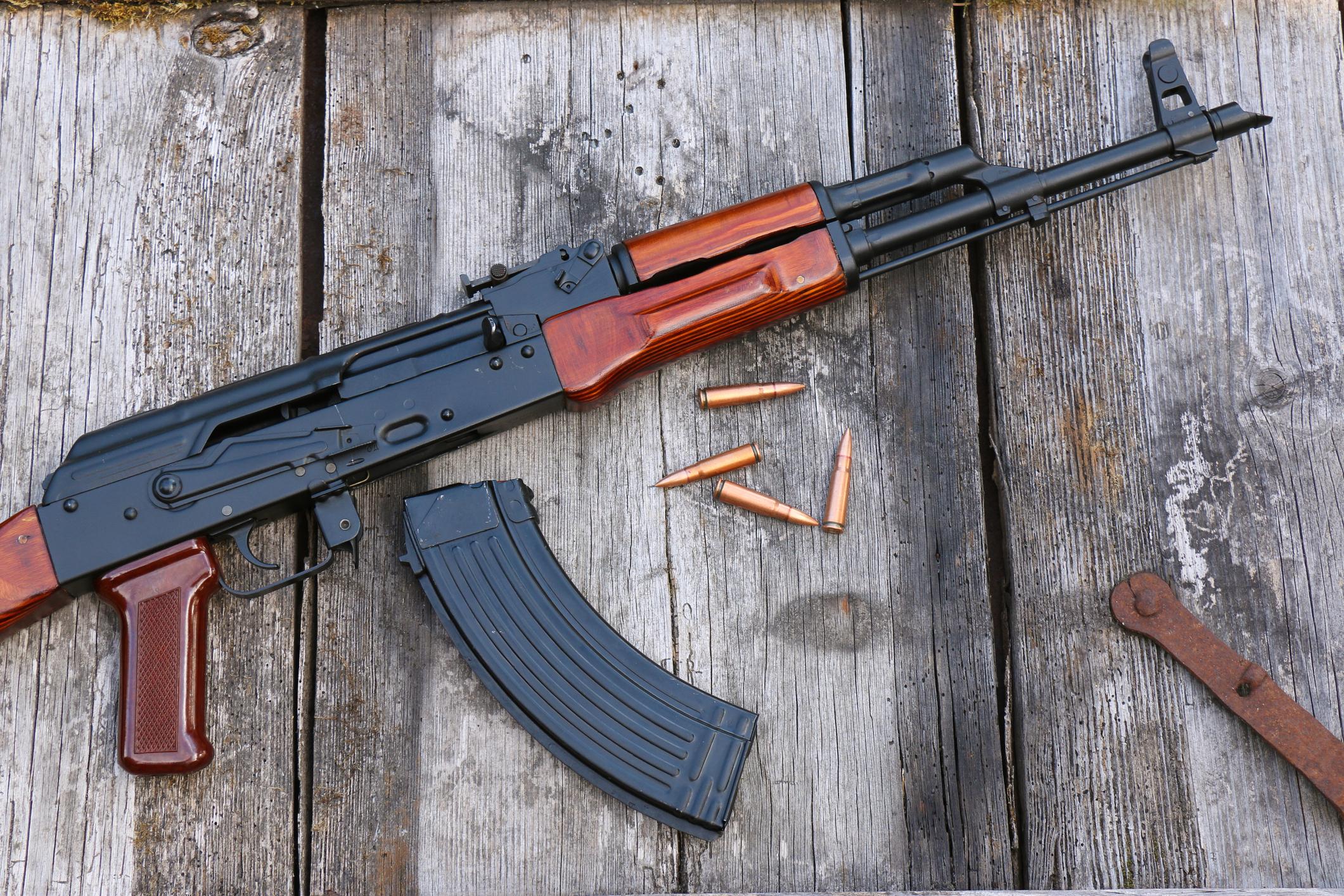
Updated
Aug 2025
For generations, the AK-47 was the spooky gun in grainy TASS footage of May Day parades in Red Square, or seen firing into the air, pistol gripped by random guerillas in far off lands.
However, today, Mikhail Kalashnikov’s most famous invention is becoming increasingly familiar to American gun owners, and the guns themselves are likewise rapidly becoming Americanized.
In This Article
Compare Side By Side
Our Top Picks
Displaying 1 - 1 of 6
Awards
Price
Overall Rating
Description
Rating Categories
Accuracy
Ergonomics
Features
Fit & Finish
Reliability
Value

$599.99 at Palmetto State
Jump to Details26
Feature-packed and yet one of the cheapest AK rifles available anywhere.
5/10
4/10
5/10
4/10
3/10
5/10

$999.99 at Palmetto State
Jump to Details31
Century Arms got on the train of making 922R-compliant AKs more than 20 years ago.
6/10
5/10
5/10
6/10
5/10
4/10
$1099.99 at Palmetto State
Jump to Details34
Homely but effective, the WASR-10 requires very little to keep it ticking.
8/10
5/10
6/10
6/10
5/10
4/10
$749.99 at Palmetto State
Jump to Details27
Riley Defense has done only one thing since 2016: produce American-made variants of the AKM/47 rifles.
5/10
5/10
4/10
5/10
4/10
4/10
$1437.99 at Primary Arms
Jump to Details33
Zastava has been in the AK game since 1959.
8/10
5/10
5/10
6/10
5/10
4/10
How We Test
Accuracy & Precision
We fire five 10-round groups from a supported bench position at 100 yards using quality brass-cased ammunition to establish baseline accuracy potential. Each rifle is tested with both match-grade ammunition and standard military ball ammo to reflect real-world usage patterns.
Reliability & Function
Our reliability testing mirrors the AK’s legendary reputation for function under adverse conditions. We fire a minimum of 500 rounds through each rifle using a mix of ammunition types including steel-cased surplus, brass-cased commercial, and various bullet weights from 123gr to 154gr.
Build Quality & Durability
We inspect each rifle’s construction methodology, focusing on critical stress points including trunnion installation, rivet quality (on stamped receivers), barrel installation, and overall fit and finish. Using precision measuring tools, we verify headspace and check for proper component alignment.
Ergonomics & Handling
We evaluate the rifle’s handling characteristics including balance, weight distribution, and control placement effectiveness. Testing includes rapid target transitions, reload speed assessments, and safety manipulation under time pressure.
More on our testing methodology
The Best AK-47 Rifles
1. Best Value: PSA PSAK-47

$599.99

26
AVERAGE
2026 Awards & Rankings
Performance Scores
Specifications:
- Weight: 7.28 lbs
- Length: 35”
- Barrel Length: 16.3”
- Capacity: 30 rounds
- Height: 10.5” (with magazine)
- Caliber 7.63x39mm
- Action: Semi-Automatic, Gas-Piston Operated
Pros
- US-produced AKs compete with ARs in terms of price
- Significantly better than earlier generations
- Budget AK price but mid-range quality
Cons
- Early generations had major quality control issues
- Bolt carrier group can show excessive wear in the first 500 rounds
- Corny polymer furniture
South Carolina’s Palmetto State Armory changed how the country sees DIY AR-15 builds, enhancements, and upgrades.
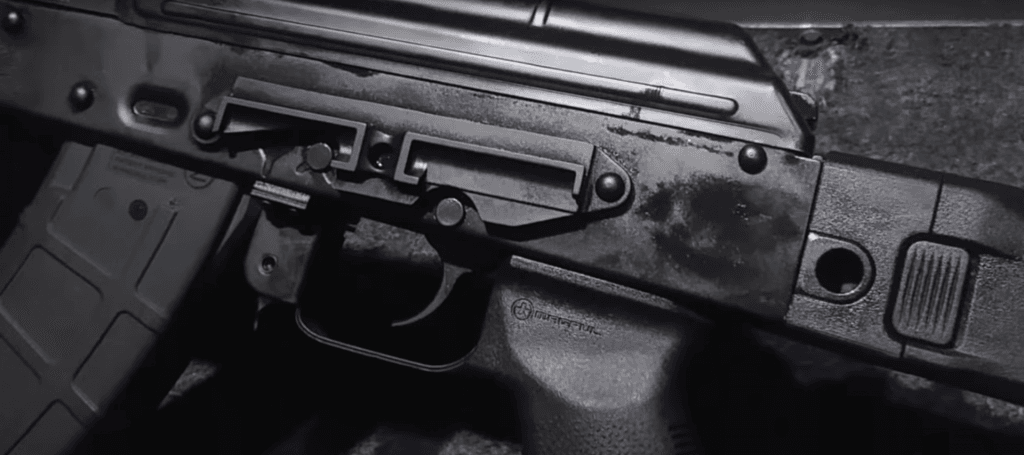
The company has been trying to do the same with a burgeoning budget Kalashnikov line, the all-American PSAK-47, which was first introduced in 2015.
In 2020, the company doubled down on the PSA AK-103 Klone which includes not only a forged carrier, bolt carrier and front trunnion, but also an FN-made cold hammer forged chrome lined barrel while still pulling together one of the cheapest AK rifles available anywhere.
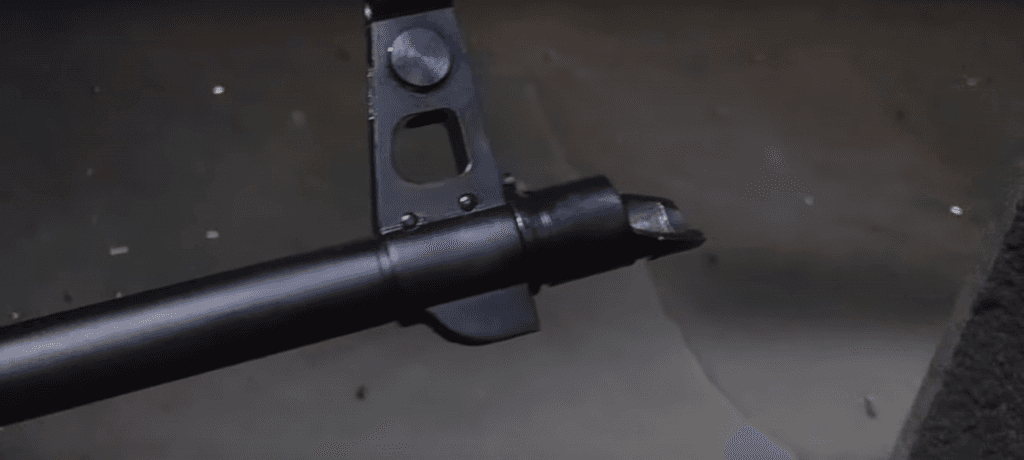
Test Performance
Accuracy & Precision (6/10): During our 100-yard testing protocol, the GF3 delivered consistent 4.2 MOA groups with military ball ammunition, which represents solid performance for a budget AK platform. The iron sights proved adequate for combat accuracy requirements, though they lack the precision adjustments found on premium models. Our digital trigger gauge measured a 6.8-pound pull weight with moderate creep typical of the AK platform, contributing to the rifle’s workmanlike but not exceptional precision capabilities.
Reliability & Function (8/10): The GF3 excelled in our reliability testing, cycling flawlessly through 500 rounds of mixed ammunition without a single malfunction. Steel-cased surplus ammunition fed and ejected cleanly, and the rifle passed our contamination test with flying colors, continuing to function after light sand and debris exposure. Magazine compatibility proved excellent across multiple manufacturers, from surplus steel to modern polymer designs.
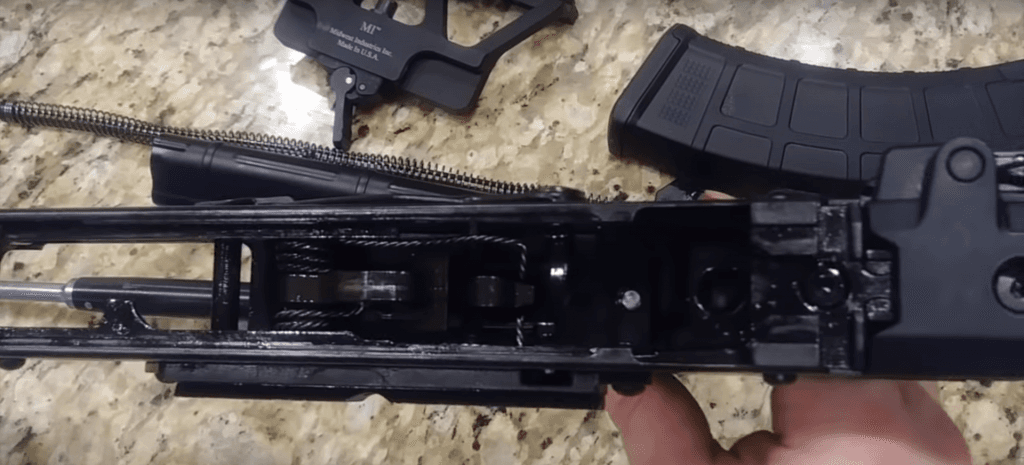
Build Quality & Durability (7/10): PSA’s commitment to forged trunnions and bolts shows in the rifle’s solid construction, with all critical components properly executed and headspace maintained throughout testing. While we noted some minor finish inconsistencies typical of budget production, the riveting quality meets acceptable standards and all stress points showed proper attention to detail. Post-firing inspection revealed normal wear patterns with no concerning stress indicators.
Ergonomics & Handling (6/10): The GF3 maintains traditional AK ergonomics with modern polymer furniture that feels functional if uninspiring. The rifle exhibits a slightly forward-heavy balance point due to its stamped receiver design, but this actually aids in recoil management during rapid fire. All controls operate smoothly and the stock length accommodates most shooters adequately, though the polymer furniture lacks the character of traditional wood or the modularity of premium tactical options.
Value & Market Position (9/10): At its price point, the GF3 represents outstanding value in the American AK market, delivering reliable performance at a cost that competes directly with budget AR-15s. PSA’s strong manufacturer support, comprehensive warranty, and readily available parts ecosystem make this an excellent choice for budget-conscious buyers seeking their first AK. The combination of domestic production, proven reliability, and aggressive pricing establishes this as the clear entry point for the platform.
2. Premium Option: Century Arms VSKA

$999.99

31
AVERAGE
2026 Awards & Rankings
Performance Scores
Specifications:
- Weight: 8lbs
- Length: 35.25”
- Barrel Length: 16.3”
- Capacity: 30 rounds
- Height: 10.5” (with magazine)
- Caliber 7.63x39mm
- Action: Semi-Automatic, Gas-Piston Operated
Pros
- Will feel familiar to the AR world in terms of accessory options
- The Picatinny Rail sections are a very nice touch
Cons
- Heavy
- Picatinny rail will be challenging to hold zero
Vermont-based Century International Arms has been a big name in the firearms import game for decades and they got on the train of making 922R-compliant AKs more than 20 years ago.
Since then, they have moved on to crafting an increasingly all-American product through their C39 and later RAS47 series guns, which admittedly had some teething problems.
Then, in 2019, they introduced the VSKA (vis-kuh), or Vermont-Stamped Kalashnikov. Using better build components and showcasing more attention to detail than past rifles, the VSKA has a bolt carrier, front trunnion, and feed ramp machined from S7 tool steel, a nitro-carburized 4140 steel bolt, and 4150 chrome hammer forged barrel.
The gun’s furniture is Vermont maple, for that cozy New England touch — and is about as close to an American-made AK as you can get. The top-mounted Picatinny rail helps with getting beyond the classic AK irons, which, as anyone can attest, are a challenge beyond 100 yards.
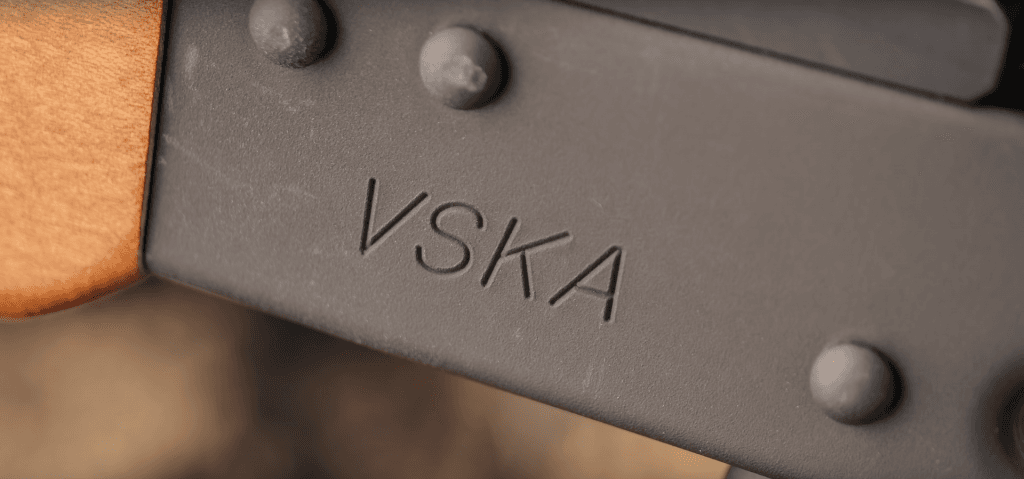
Test Performance
Accuracy & Precision (6/10): Our testing revealed the VSKA capable of 4.5 MOA accuracy at 100 yards, with the Vermont maple furniture providing a stable shooting platform that enhances consistency. The factory iron sights arrived properly aligned, a welcome improvement over Century’s earlier quality control issues. The trigger breaks cleanly at 7.2 pounds, offering predictable performance that supports the rifle’s combat accuracy potential while remaining manageable for rapid fire sequences.
Reliability & Function (7/10): The VSKA demonstrated generally reliable operation throughout our test protocol, though we encountered minor feeding issues with one specific magazine design that required slight adjustment. The gas system operated properly under contamination testing, and extraction/ejection patterns remained consistent across various ammunition types. While not quite reaching the legendary reliability of proven imports, the rifle showed marked improvement over Century’s problematic earlier generations.
Build Quality & Durability (8/10): Century’s adoption of S7 tool steel components represents a significant quality upgrade, with proper heat treatment evident in our post-firing inspection. The chrome hammer-forged barrel showed excellent attention to detail, and the rivet work throughout the receiver demonstrated professional execution. This rifle clearly reflects Century’s efforts to address the serious quality issues that plagued their C39V2 and RAS47 models, resulting in a substantially more durable platform.
Ergonomics & Handling (6/10): The VSKA’s additional weight from its quality components and Vermont maple furniture creates a more substantial feel than typical stamped receivers, which some shooters will appreciate for recoil management. The comfortable maple furniture provides excellent grip surfaces and a solid cheek weld, while the included Picatinny rail offers modern optics mounting capability. However, this added mass does impact handling speed and may fatigue some users during extended shooting sessions.
Value & Market Position (6/10): Positioned in the mid-range pricing category, the VSKA reflects Century’s commitment to quality improvement but at a cost that places it above budget competitors. The quality improvements justify the price increase over earlier problematic models, though the limited aftermarket support compared to established imports affects long-term versatility. Century’s improved warranty and customer support demonstrate confidence in their quality upgrades.
3. Best Folding Stock: Century Arms WASR-10
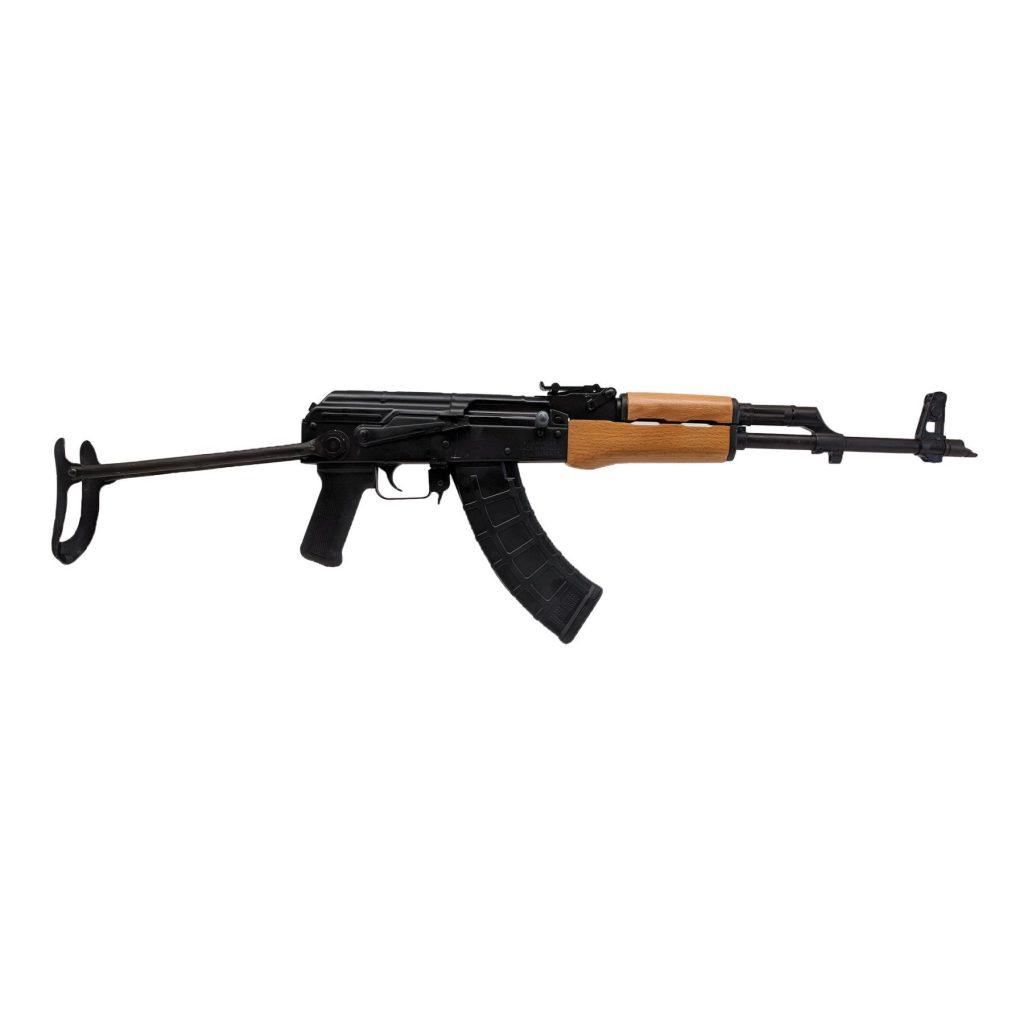
$1099.99

34
AVERAGE
2026 Awards & Rankings
Performance Scores
Specifications:
- Weight: 8lbs
- Length: 35.25”
- Barrel Length: 16.3”
- Capacity: 30 rounds
- Height: 10.5” (with magazine)
- Caliber 7.63x39mm
- Action: Semi-Automatic, Gas-Piston Operated
Pros
- Classic AKM folder
- Solid furniture fits well
- Threaded muzzle & classic slant compensator
- Enhanced trigger group
Cons
- Folding stock hurts to shoot for more than a few rounds
- You’ll need to modify the receiver to accept fixed stocks
- Polymer furniture is decidedly budget
AKs are known for being kind of ugly and the Romanian-made WASR-10 is about the homeliest of the bunch. Luckily Century Arms has updated and upgraded the former 5th beauty queen alternate.
Not very well fit or finished, however, it is a good example of what makes the AK-47 platform great as it will run when needed and requires very little in the way of keeping it ticking. Also, they are about the least expensive option for a decent Kalash, so who cares what they look like? If you want our take on the WASR series (albeit in the 9mm variety) check out our WASR-M review.
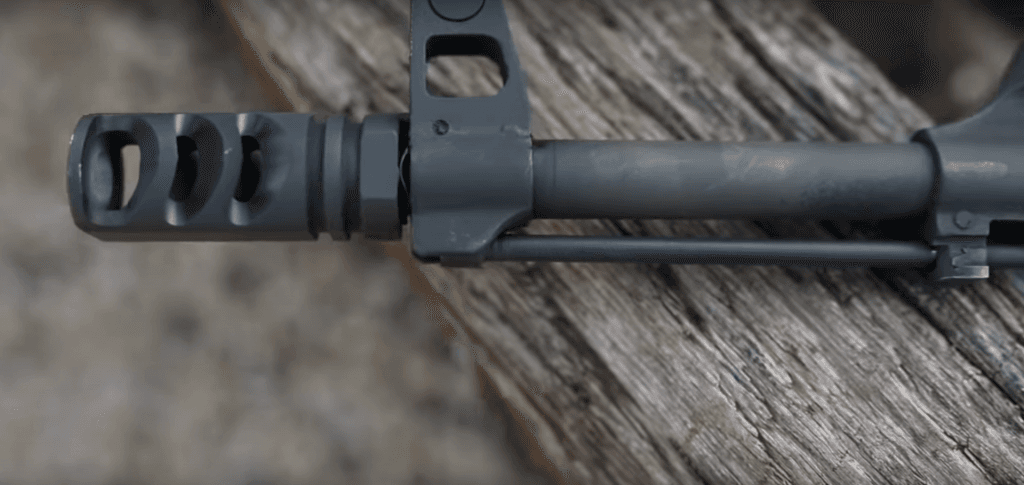
Accuracy & Precision (7/10): The WASR-10 surprised us with 3.8 MOA accuracy during our 100-yard testing, demonstrating that Romanian military manufacturing standards translate well to civilian use. The classic iron sight system proved effective once properly zeroed, though some examples in the market suffer from the infamous canted sight issue that requires professional correction. Our test rifle’s trigger pulled at a reasonable 6.5 pounds with typical AK characteristics that experienced shooters will find familiar and manageable.
Reliability & Function (9/10): This rifle’s legendary reputation for reliability proved well-deserved during our extensive testing, functioning flawlessly with the widest variety of ammunition we could source, from premium brass to the most corroded surplus steel cases. The WASR-10 excelled in our contamination tests, continuing to cycle smoothly even after deliberate exposure to sand and debris. Magazine compatibility proved universal, accepting everything from original surplus steel magazines to modern polymer designs without modification.
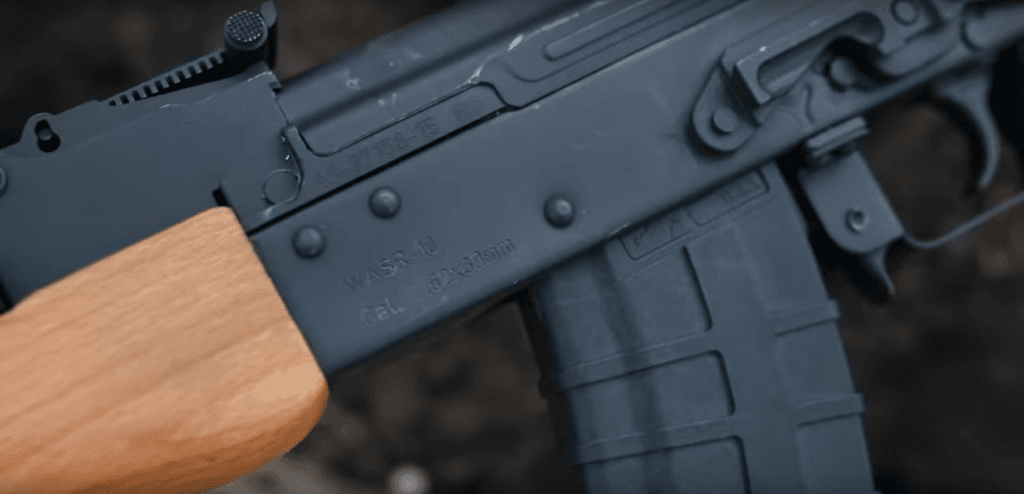
Build Quality & Durability (7/10): The Romanian military heritage shows clearly in the WASR-10’s construction, with time-tested manufacturing techniques evident in every component. While cosmetic finish variations exist between individual rifles, reflecting the practical military approach to manufacturing, the fundamental construction remains sound with proven long-term durability. Our post-firing inspection revealed the robust engineering that has made these rifles legendary for surviving decades of hard use in military service worldwide.
Ergonomics & Handling (6/10): The WASR-10 delivers the traditional AK experience with all its strengths and limitations, featuring classic proportions and control placement that millions of users worldwide have mastered. The folding stock proves functional for storage and transport but becomes uncomfortable during extended shooting sessions. The traditional hardwood furniture provides a solid grip and authentic feel, though the classic AK ergonomics will feel foreign to shooters accustomed to modern AR-15 designs.
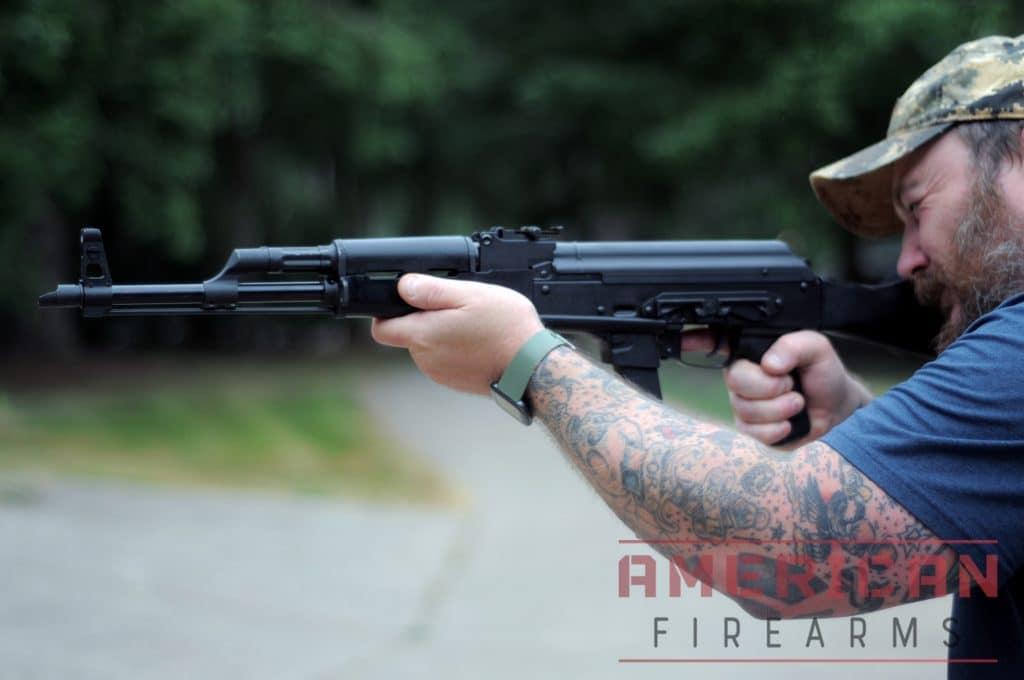
Value & Market Position (7/10): Despite rising prices in the import market, the WASR-10’s proven reliability and military heritage justify its cost for shooters seeking authentic AK experience. The wide availability of parts and accessories, combined with strong resale value, makes this a solid investment for long-term ownership. While no longer the budget champion it once was, the WASR-10 remains the benchmark against which other AK rifles are measured for reliability and authenticity.
4. Also Great: Kalashnikov USA KR-103
Specifications:
- Weight: 7.65lbs
- Length: 36.25”
- Barrel Length: 16.3”
- Capacity: 30 rounds
- Height: 10.5” (with magazine)
- Caliber 7.63x39mm
- Action: Semi-Automatic, Gas-Piston Operated
Pros
- Muzzle device is fantastic at taming recoil
- Comes standard issue with a cleaning rod
Cons
- Sights are substandard for a modern combat rifle
- Selector levers are extremely flimsy
Florida-based Kalashnikov USA has been making AK-style shotguns and pistol caliber carbines for years but in 2020 they finally announced what people have wanted since Red Dawn came out: a legit 7.62x39mm rifle. The KR-103 is fundamentally styled after the AK-103, a more current Russian-produced AK variant in the same caliber.
Some 100 percent U.S.-made, it will have 5.5mm forged trunnions and is compatible with most AKM and AK74 parts and accessories.
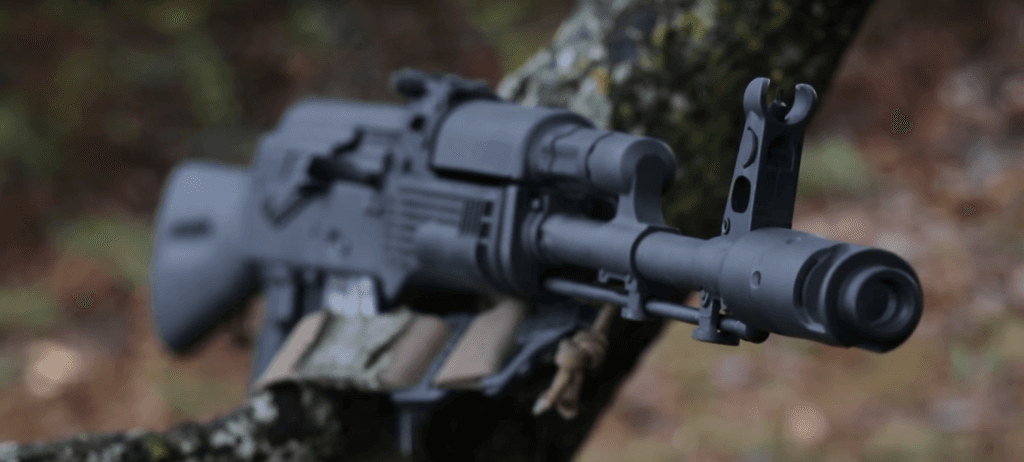
Test Performance
Accuracy & Precision (7/10): The KR-103 delivered impressive 3.9 MOA accuracy during our testing, with the quality barrel and well-regulated gas system contributing to consistent shot placement. The rifle’s engineering shows attention to precision manufacturing, with tight tolerances that enhance accuracy potential without sacrificing the reliability AKs are known for. Our measured trigger pull of 6.3 pounds represents some of the best performance we’ve seen in the AK platform, offering a clean break that supports precision shooting while maintaining rapid-fire capability.
Reliability & Function (8/10): Throughout our extensive testing protocol, the KR-103 demonstrated excellent cycling and extraction characteristics, handling all ammunition types with confidence. The rifle performed admirably under adverse conditions, maintaining function even when deliberately contaminated with sand and debris. Magazine compatibility proved very good across our test selection, with the rifle accepting both military surplus and modern commercial magazines without modification or feeding issues.
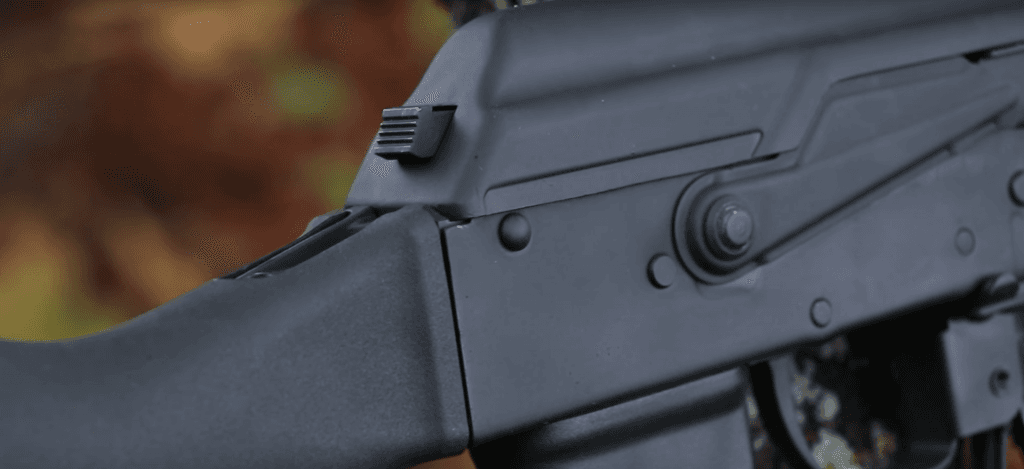
Build Quality & Durability (8/10): Kalashnikov USA’s domestic manufacturing shows impressive attention to detail, with forged trunnions and quality components throughout the rifle demonstrating professional execution.
The fit and finish exceeds most competitors, with proper attention to critical specifications that ensure long-term durability. Our post-firing inspection revealed excellent quality control, with all components showing appropriate heat treatment and manufacturing precision that should provide years of reliable service.
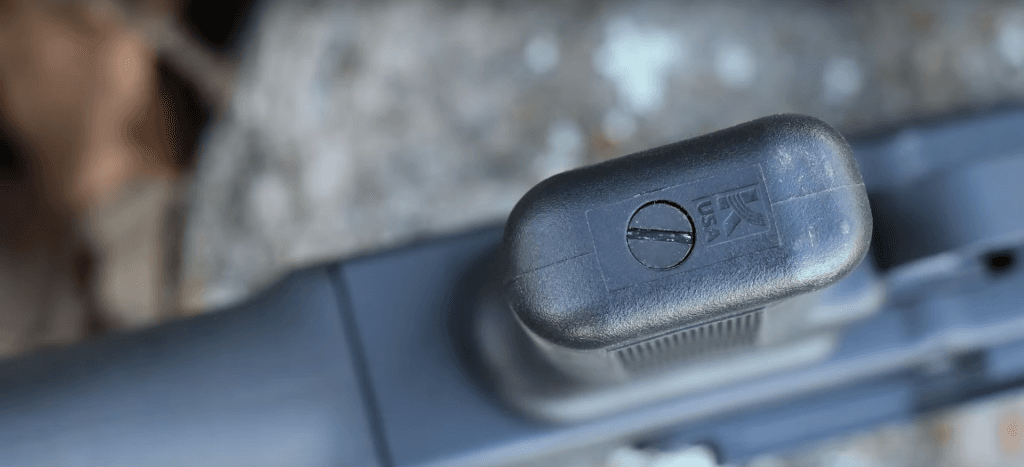
Ergonomics & Handling (7/10): The KR-103 achieves excellent balance and proportions, creating a rifle that handles naturally for both experienced AK users and newcomers to the platform. The effective muzzle device significantly reduces felt recoil and muzzle rise, making rapid follow-up shots more controllable than typical AK designs.
The comfortable furniture and well-designed grip enhance the shooting experience, while thoughtful touches like the included cleaning rod demonstrate attention to user needs.
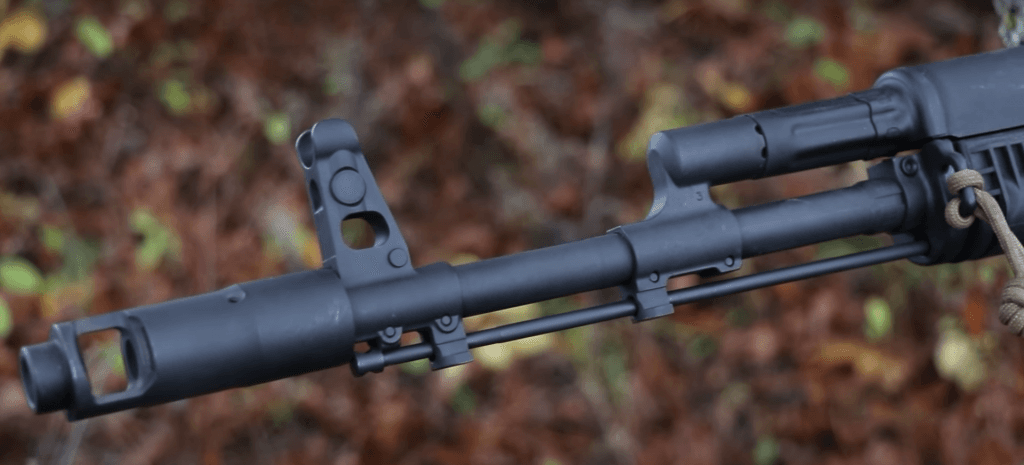
Value & Market Position (6/10): Positioned as a premium domestic option, the KR-103 commands higher pricing that reflects its quality but may limit market appeal to serious enthusiasts.
The manufacturing quality justifies the cost for buyers seeking the finest American-made AK available, though budget-conscious shooters may find better value elsewhere. Strong manufacturer support and the prestige of the Kalashnikov name add value for collectors and serious users willing to pay for domestic production and premium features.
5. Best Wood Furniture: Riley Defense RAK-47
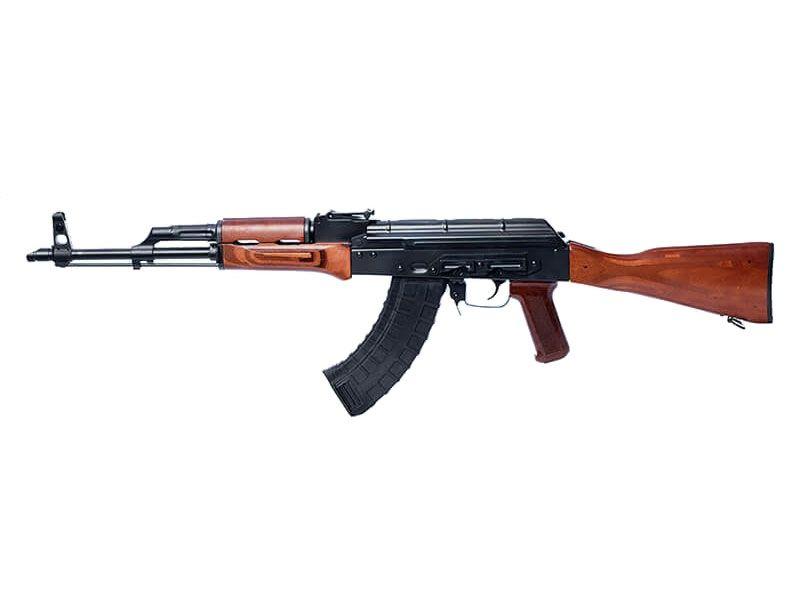
$749.99

27
AVERAGE
2026 Awards & Rankings
Performance Scores
Specifications:
- Weight: 7.28 lbs
- Length: 35”
- Barrel Length: 16.3”
- Capacity: 30 rounds
- Height: 10.5” (with magazine)
- Caliber 7.63x39mm
- Action: Semi-Automatic, Gas-Piston Operated
Pros
- Well tuned right out of the box
- Comfortable bakelite grip
Cons
- Expensive
- No optics solution
Based in North Carolina, Riley Defense has done only one thing since 2016: produce American-made variants of the AKM/47 rifles. Their RAK-47 comes in a classic variant with laminated wooden furniture, as well as models with polymer and featureless stocks for customers in restrictive states.
All use a forged trunnion, bolt, and carrier.
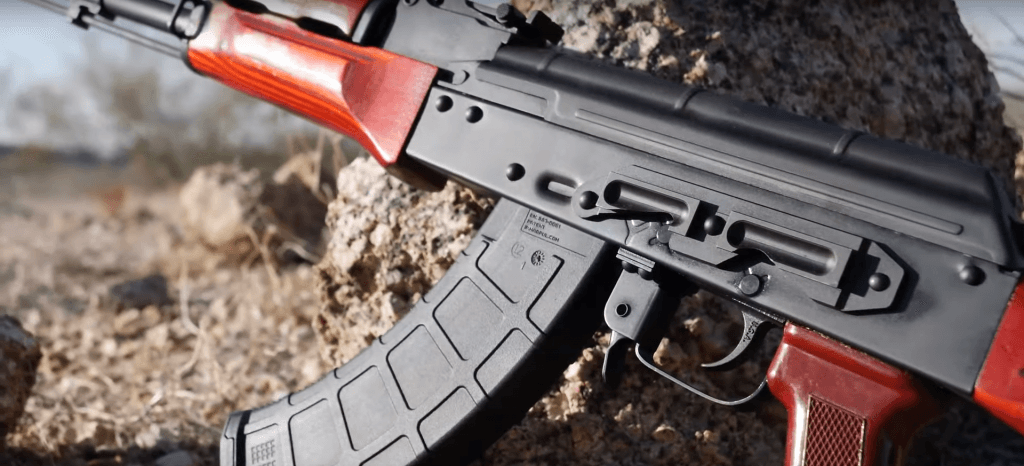
Test Performance
Accuracy & Precision (6/10): Our testing revealed the RAK-47 capable of 4.4 MOA accuracy, with the beautiful laminated wood furniture providing enhanced stability during precision shooting. The iron sights arrived properly aligned from the factory, and the 7.0-pound trigger pull offers standard AK characteristics that experienced users will find familiar.
While not exceptional, the accuracy performance meets combat requirements and provides adequate precision for most practical applications.
Reliability & Function (7/10): The RAK-47 demonstrated generally reliable operation throughout our test protocol, though we noted minor cycling issues with lighter bullet weights that may require attention for users preferring specific ammunition types. Extraction and ejection patterns remained consistent across our ammunition variety, and magazine compatibility proved good with both military surplus and commercial options.
The rifle showed typical AK resilience under adverse conditions, though not quite reaching the legendary reliability of proven military designs.
Build Quality & Durability (7/10): Riley Defense’s attention to forged components shows in the rifle’s solid construction, with beautiful laminated wood furniture that demonstrates craftsmanship rarely seen in modern production.
The finishing details throughout the rifle reflect careful attention to aesthetics without sacrificing function, creating a visually appealing firearm that should provide years of reliable service. Quality control appears consistent, with our test rifle showing proper assembly and finishing techniques.
Ergonomics & Handling (7/10): The RAK-47’s laminated wood furniture provides exceptional ergonomics, offering comfortable grip surfaces and an excellent cheek weld that enhances shooting comfort during extended sessions.
The rifle achieves good balance with traditional AK proportions that feel natural to experienced users. The beautiful wood furniture not only looks attractive but provides functional advantages in grip and control that synthetic alternatives often lack.
Value & Market Position (5/10): Riley Defense positions the RAK-47 as a premium domestic option, but the higher pricing limits its appeal in a market with strong competition from proven imports and other domestic manufacturers.
While the quality justifies the cost for buyers seeking beautiful wood furniture and domestic production, the limited market presence affects long-term support and parts availability. The rifle appeals to a niche market of buyers prioritizing aesthetics and American manufacturing over pure value.
6. Also Great: Zastava Z70
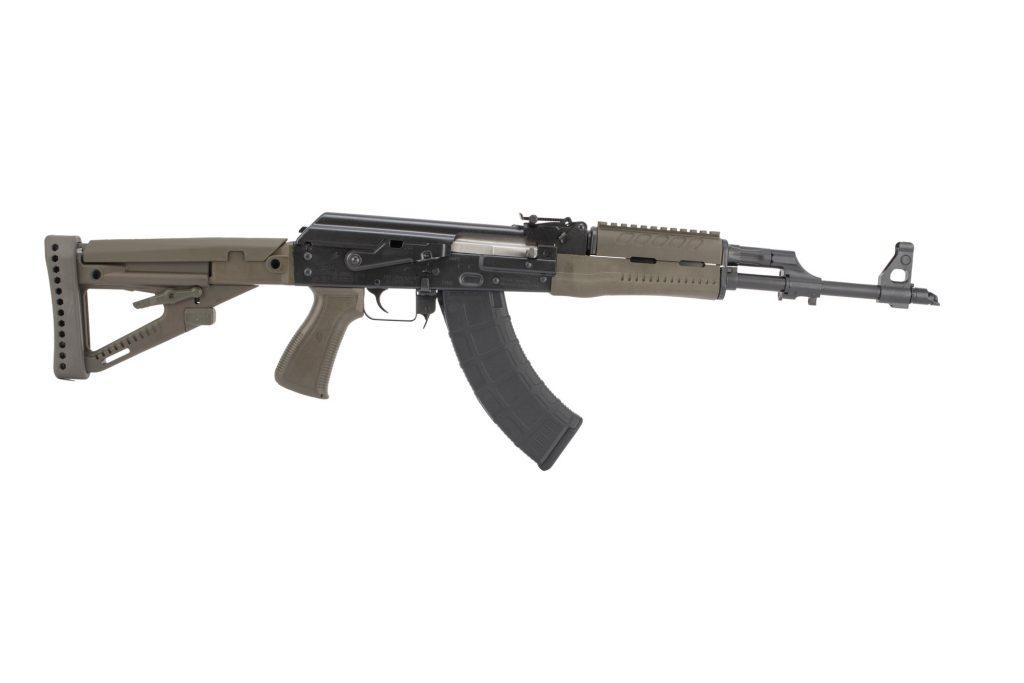
$1437.99

33
AVERAGE
2026 Awards & Rankings
Performance Scores
Specifications:
- Weight: 8lbs
- Length: 35”
- Barrel Length: 16.3”
- Capacity: 30 rounds
- Height: 10.5” (with magazine)
- Caliber 7.63x39mm
- Action: Semi-Automatic, Gas-Piston Operated
Pros
- Beefed-up receiver
- Triangle folder looks truly cool
Cons
- Would be better with an RPK barrel
- The receiver will have to be modified to accept non-folding stocks
Based in Serbia in a firearms plant that dates to 1853, Zastava has been in the AK game since 1959 and launched the M70 subtype more than 50 years ago. One of the most popular Kalash in the world, Zastava’s semi-auto NPAP and ZPAP series guns were originally imported to the U.S. by Century and distributed under that company’s banner.
However, Zastava USA was set up in 2019 and they are now bringing in their own guns which get a gentle 922R treatment here once they clear customs. Rob Ski of the AK Operators Union recently deemed the now Z70 as the “Best AK for the money,” after a 5,000-round test with no maintenance.
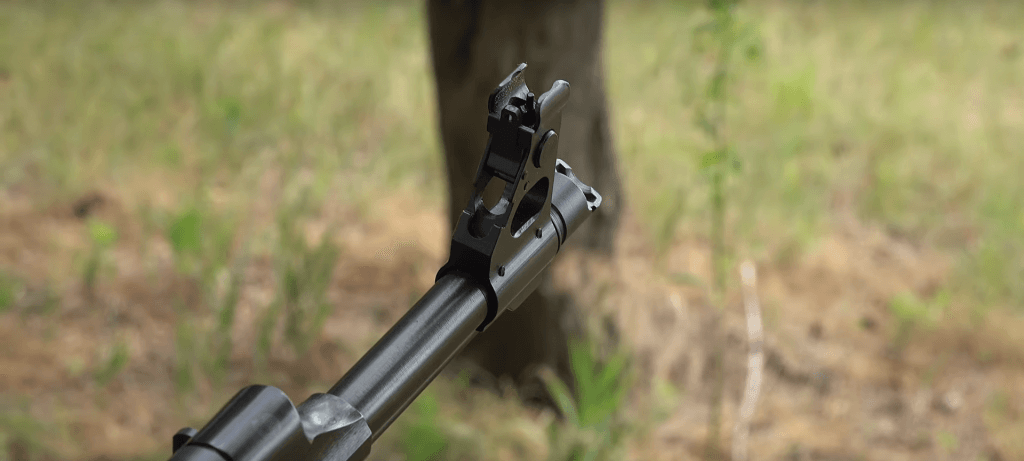
Test Performance
Accuracy & Precision (8/10): The M70 delivered our best accuracy results at 3.5 MOA during 100-yard testing, with the chrome-lined barrel demonstrating exceptional consistency across multiple ammunition types. The robust sight system proved well-regulated from the factory, requiring minimal adjustment to achieve precise zero. Our measured trigger pull of 6.4 pounds offered clean, predictable break characteristics that support both precision shooting and rapid fire applications, representing some of the finest trigger work we’ve encountered in the AK platform.
Reliability & Function (9/10): The M70’s outstanding reliability exceeded even our high expectations, functioning flawlessly throughout all testing phases with every ammunition type we could source. The rifle demonstrated exceptional contamination resistance, continuing to operate smoothly even under deliberate adverse conditions that would challenge lesser designs. This performance validates the extensive testing by AK Operators Union, who declared the M70 the “Best AK for the money” after a grueling 5,000-round test without maintenance.
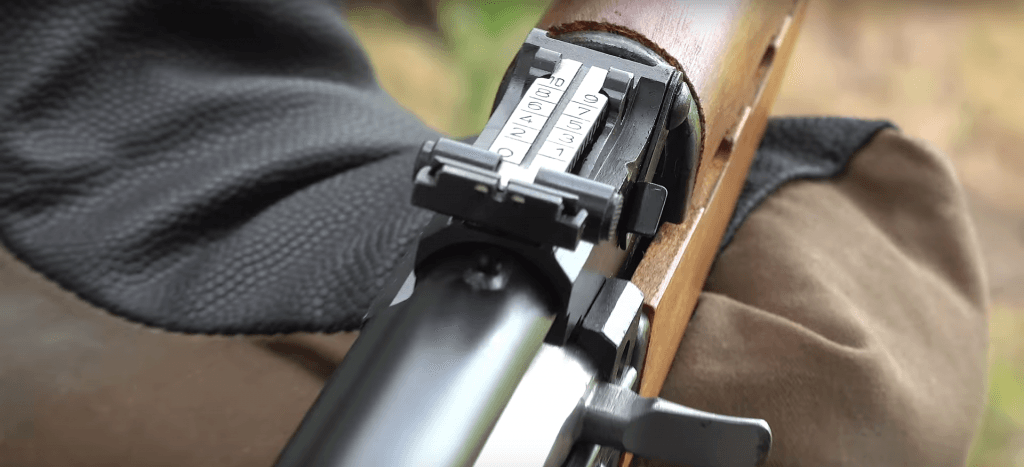
Build Quality & Durability (9/10): Zastava’s 1.5mm bulged trunnion represents exceptional engineering, providing additional strength that should ensure decades of reliable service under hard use. The Serbian manufacturing expertise, refined over more than six decades of AK production, shows in every detail from the excellent riveting work to the quality chrome-lined barrel. Our post-firing inspection revealed the robust construction that has made Zastava rifles legendary for durability in military service worldwide.
Ergonomics & Handling (6/10): The M70’s Yugo-pattern design creates some limitations for users seeking aftermarket furniture options, though the included triangle folding stock provides functional if not ideal ergonomics. The rifle’s slightly heavier weight compared to standard AKM designs affects handling speed but contributes to recoil management and overall stability. Users must plan for Yugo-specific accessories and furniture, which limits modularity compared to standard AKM-pattern rifles.
Value & Market Position (7/10): Despite its higher price point, the M70 delivers exceptional value for buyers seeking the finest imported AK available in the American market. The combination of Serbian manufacturing heritage, proven reliability, and superior build quality justifies the investment for serious users. While the limited furniture compatibility affects versatility, the rifle’s fundamental excellence and strong long-term durability make it an outstanding choice for buyers prioritizing quality over modularity.
Models to Avoid
While the AK platform’s legendary reliability stems from its simple, robust design, not every manufacturer has executed that design properly. Some rifles bearing the AK name have proven dangerous to their users or simply unreliable enough to tarnish the Kalashnikov reputation. Here are the models we strongly recommend avoiding.
Century Arms C39V2 and RAS47
Perhaps no rifles have generated more controversy in the American AK market than Century Arms’ early attempts at domestic production. Both the C39V2 and RAS47 suffer from a fundamental flaw: the use of cast trunnions instead of properly forged components.
The Problem: Cast trunnions lack the structural integrity required for the violent cycling of the AK action. Under sustained fire, these components can crack, stretch, or even catastrophically fail. Independent testing by AK Operators Union documented headspace issues developing after as few as 3,000 rounds, with some rifles becoming unsafe to fire.
Why It Matters: When a trunnion fails, it’s not just unreliability—it’s a genuine safety hazard. Excessive headspace can lead to case ruptures, bolt override situations, or worse. The cost savings from casting simply aren’t worth the risk.
Century’s Response: To their credit, Century Arms recognized these issues and moved to forged components in their later VSKA line. However, examples of the problematic models remain in circulation on the used market.
Pioneer Arms “Radom” AKs
Don’t let the Polish “Radom” name fool you—these rifles have no connection to the legendary FB Radom factory. Pioneer Arms produces budget AKs that have consistently demonstrated quality control problems and questionable metallurgy.
The Issue: Like Century’s early rifles, Pioneer Arms used cast trunnions in many of their rifles. Additionally, reports of improper heat treatment, poor riveting, and substandard barrels have plagued the brand. The low price point reflects corners cut in critical areas.
The Confusion: The use of “Radom” in their marketing deliberately trades on the reputation of genuine Polish military production, leading uninformed buyers to assume they’re getting authentic Polish quality.
I.O. Inc. AKs
Inter Ordnance (I.O.) rifles represent perhaps the most notorious example of how badly an AK can be built. Multiple generations of I.O. rifles have suffered from dangerous design flaws and quality control failures.
Documented Problems: Catastrophic bolt failures, improper headspace, poor riveting, and substandard metallurgy have all been documented across I.O.’s product line. The company went through multiple iterations trying to address these issues, but none successfully resolved the fundamental problems.
Safety Concerns: Multiple reports exist of I.O. rifles experiencing dangerous malfunctions including bolt face failures and receiver cracking. Any I.O. rifle should be considered suspect without professional inspection.
Early PSA Generations (Pre-GF3)
While Palmetto State Armory’s current GF3 and later generations represent solid value in American-made AKs, I mean, they’re on our list for a reason, their early attempts had significant teething problems. First and second-generation PSA AKs suffered from casting issues similar to other problematic American manufacturers.
What Changed: PSA learned from these early mistakes and moved to properly forged components. However, early generation rifles may still be found on the used market at attractive prices—buyer beware.
Big Red Warning Signs
When shopping for any AK, watch for these danger signals:
- Cast trunnions: Any rifle advertising “cast” components in critical areas should be avoided
- Unusually low prices: If a rifle is significantly cheaper than established imports, ask why
- Poor riveting: Crooked, uneven, or proud rivets indicate poor workmanship throughout
- Canted sights: While cosmetic, severely canted sights often indicate broader quality control problems
- Unknown manufacturers: Stick with established names with track records
The AK’s reputation for reliability comes from proper execution of Mikhail Kalashnikov’s brilliant design. When manufacturers cut corners on metallurgy, heat treatment, or component specifications, they create rifles that not only fail to live up to the AK name but can actually endanger their users.
In a market where quality imports like the Zastava ZPAP M70 and proven domestics like the PSA GF3 are readily available, there’s simply no reason to risk your safety on problematic rifles. The few hundred dollars saved on a questionable AK aren’t worth the potential consequences.
Our Recommendation: Stick with manufacturers who have proven track records and use proper forged components. Your safety—and the AK’s legendary reputation—depend on it.
Remember: a true AK should run when you need it most. Don’t trust that reliability to manufacturers who’ve compromised the very foundations of Kalashnikov’s design.
The History of the AK
A wounded tank crewman in World War II, young Mikhail Timofeyevich Kalashnikov was able to repurpose himself as a firearms designer, creating a series of interesting, if unsuccessful, sub-machine gun and carbine prototypes in the mid-1940s, learning from each effort.
A poet at heart– he published several books of prose in his lifetime– Kalashnikov grew up hunting in Siberia, a harsh and unforgiving climate.

His experiences on the battlefield and on the Siberian plain helped him, in the end, to craft an almost poetically simple Avtomat, or automatic rifle, which, after a series of evolutions and refinements by more seasoned engineers, produced the AK-47 which was one of the first assault rifles first adopted by the Soviet military in 1949.
What made the AK a great gun?

Using a long-stroke gas piston action with what could be termed “generous” tolerances, the AK could be constructed from a simple one-piece sheet of steel that could be bent to form the receiver – home builders have famously crafted them from repurposed garden shovels – and completed with similarly simple internals.
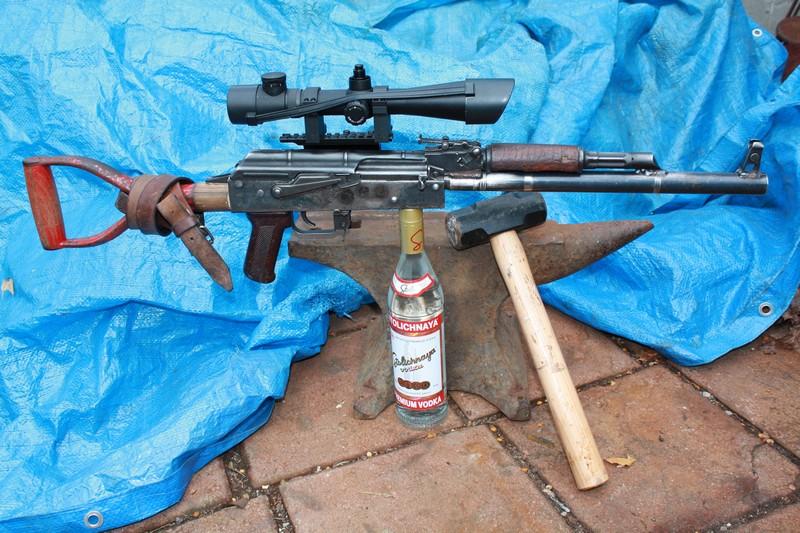
The toughest challenge in making a functioning AK rifle is to form an accurate barrel with a reliable front trunnion and iron sights.
Using the 7.62x39mm 57-N (M43) cartridge, which was first introduced in 1944 for use with the SKS-45 semi-auto carbine, the AK provided a simple and effective weapon that, only slightly larger than the submachine guns of the early 1940s, could deliver 30 rounds in three seconds flat and, when in the hands of someone skilled in basic marksmanship, still hit man-sized targets out to 500 yards.
The standard AK-47 assault rifle soon morphed through a series of generational updates over the past three-quarters of a century to become the AKM, AK-103/104, AK-109, AEK-973, and others, all in the same caliber.
Eventually, the AK was also ported over to the increasingly popular pistol format, and the AK pistol was born.
Teaching a comrade to fish
In the interest of “teaching a comrade to fish” the weapon proved popular enough to be made by Soviet satellites or allies such as Bulgaria, Communist China, East Germany, Egypt, Hungary, Iraq, North Korea, Pakistan, Poland, Romania, Vietnam, and Yugoslavia– albeit with local tweaks to the design– after a simple transfer of technology, either official or unofficial.
Tens of millions of users cannot be wrong!
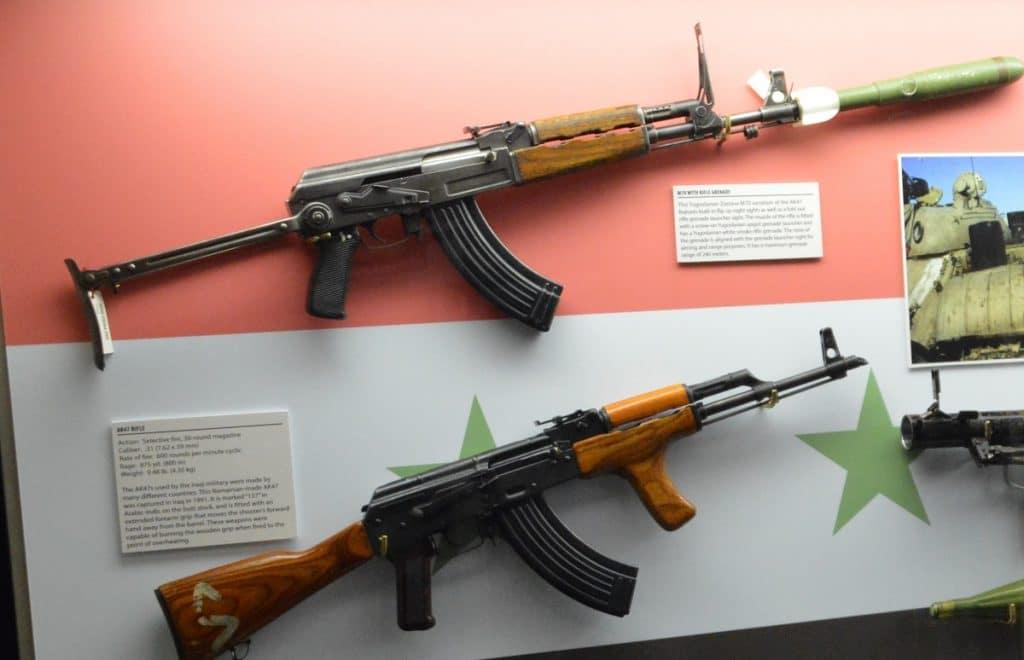
Far from being a relic of the past, while the gun was augmented by the 5.45x45mm AK-74/AK-12 models in Soviet/Russian service, the 7.62x39mm Kalashnikov remains in top form, and a new version, the AK-203, was recently adopted by the Indian Army — the largest military with the exception of China. They hope to produce over 700,000 units in a domestic factory with Russian assistance.
Importantly, all these variants use the same style of action, with its easy-to-learn nomenclature and weapons manipulation process.
In short, a Soviet motorized infantry rifleman in 1949 could grab a ride in a wormhole, pick up a dirty and unloaded AK-203 of today, and figure out how to get it up and running in about 30 seconds.
Enter the Commercial AK
When it comes to Americans and the Kalash, the first CIA intelligence reports on the gun surfaced in 1953, and photos of the gun, a weapon whose existence until then was kept as a national secret by Moscow, went mainstream in 1956 when Hungarian rebels captured a few during the uprising in that country and were photographed by admiring Western journos.
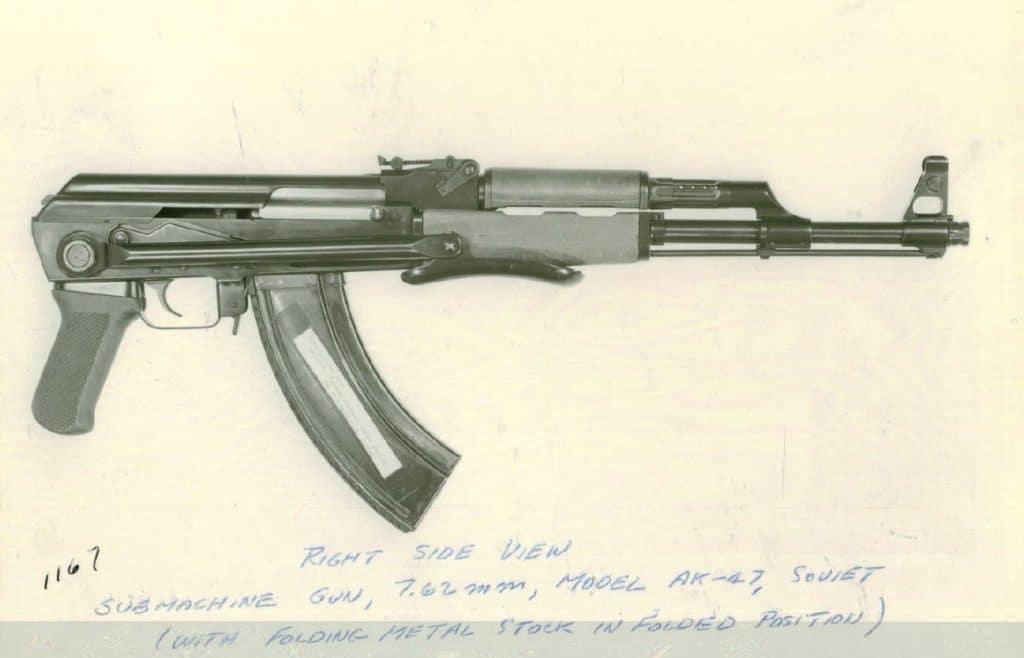
Soon enough, American Soldiers and Marines got to see AKs first-hand and up close in a place called Vietnam.
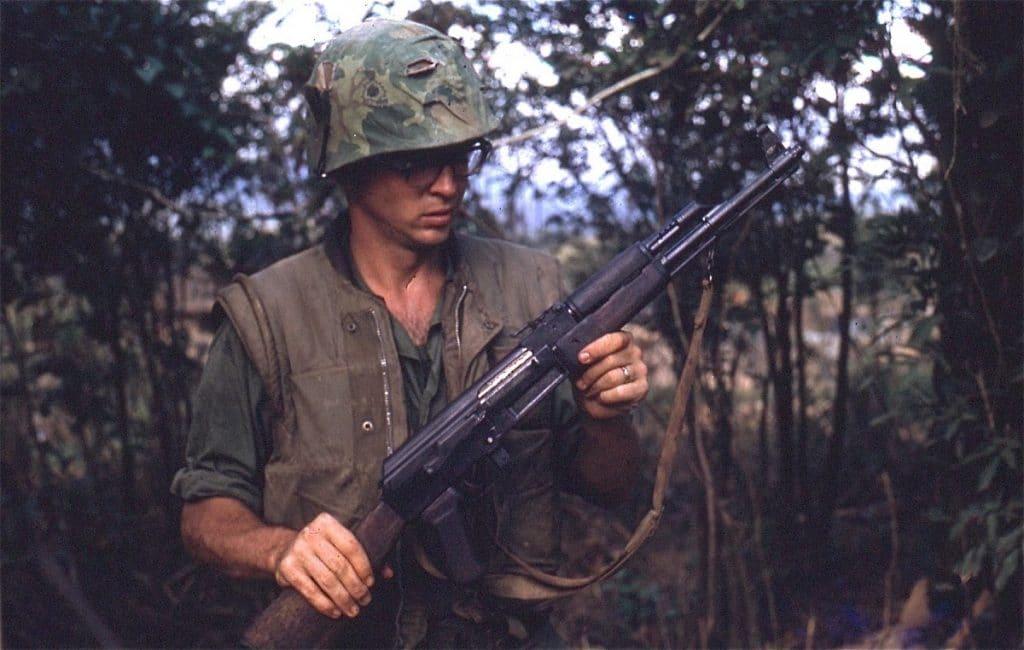
While many captured AKs were recycled for use in special operations, a few were brought back home to the U.S.– both with and without approval—with at least one “third pin” Kalash famously seen at Wounded Knee in the hands of a Vietnam vet in 1973.
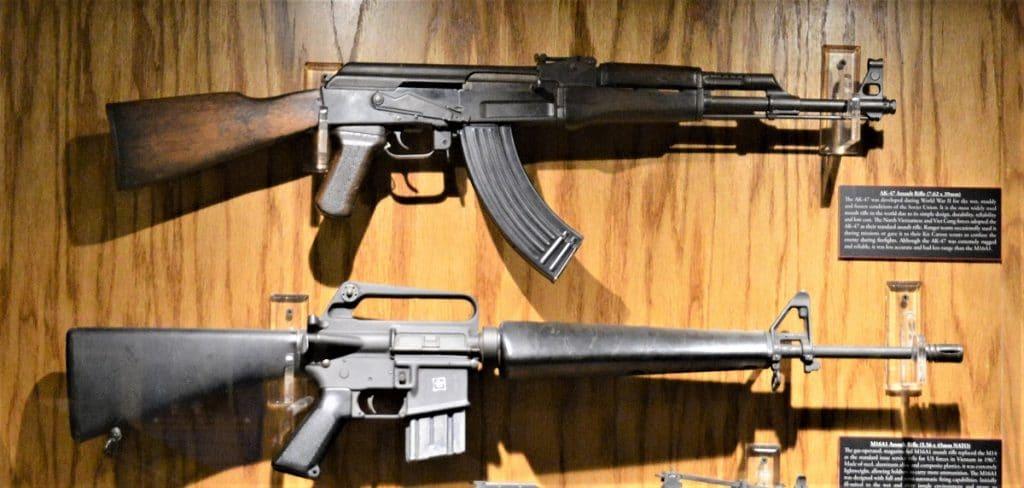
However, the increasingly iconic gun was not available on the American consumer market, except for AK-ish Finnish-made Valmets, until Egyptian-produced Maddi ARMs were brought into the U.S. by Steyr beginning in 1982.
These same hard-to-find ARMs were seen extensively in the original Red Dawn, both in the hands of the faux Russkis and the hardy Wolverines.
This whet the American appetite for General Kalashnikov’s Avtomat in any form and soon the call was answered by Beijing, who crated up semi-auto-only Type 56 rifles under the Norinco umbrella and shipped them to rows of Southern California import houses, who in turn flooded the market with a buffet of bargain Chinese-made AKs, complete with all the fixings.
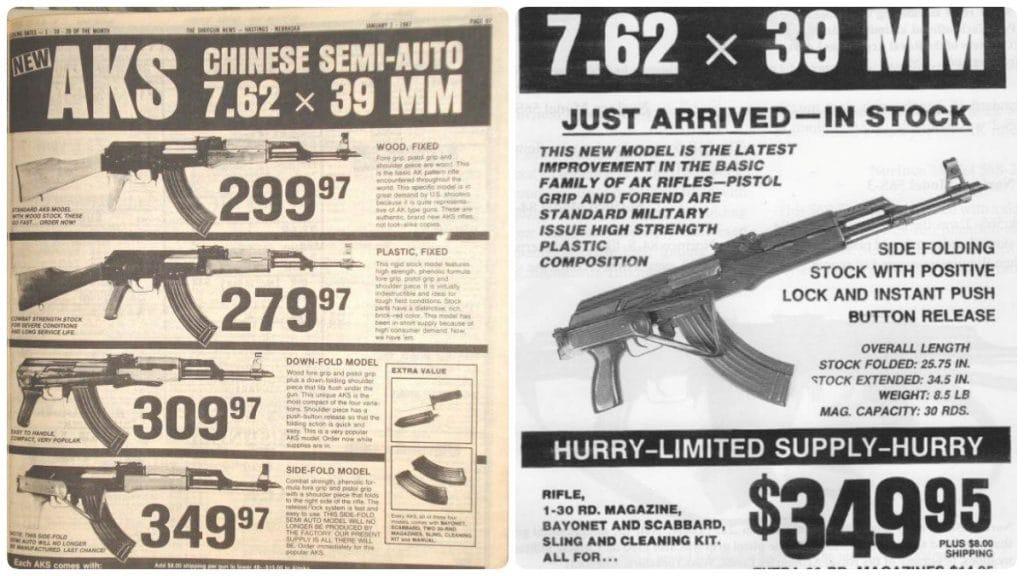
With Chicom Kalash pouring into the country at prices lower than what any domestic maker could attempt to produce a rifle, it kept competition away, that is until the 1989 and follow-on 1994 bans on Chinese-made rifles and pistols killed the golden goose with ATF red tape.
The newfound demand, created by a generation of widespread China Sports rifles and amazingly cheap ammo in bulk, was soon met with a new supply as the Cold War thawed and newly capitalistic firms in Bulgaria, Romania, Russia and Yugoslavia quickly turned out Arsenals, Cugirs, Kalashnikov/Saigias, and Zastavas to give the hard-working American gun owner what they wanted.
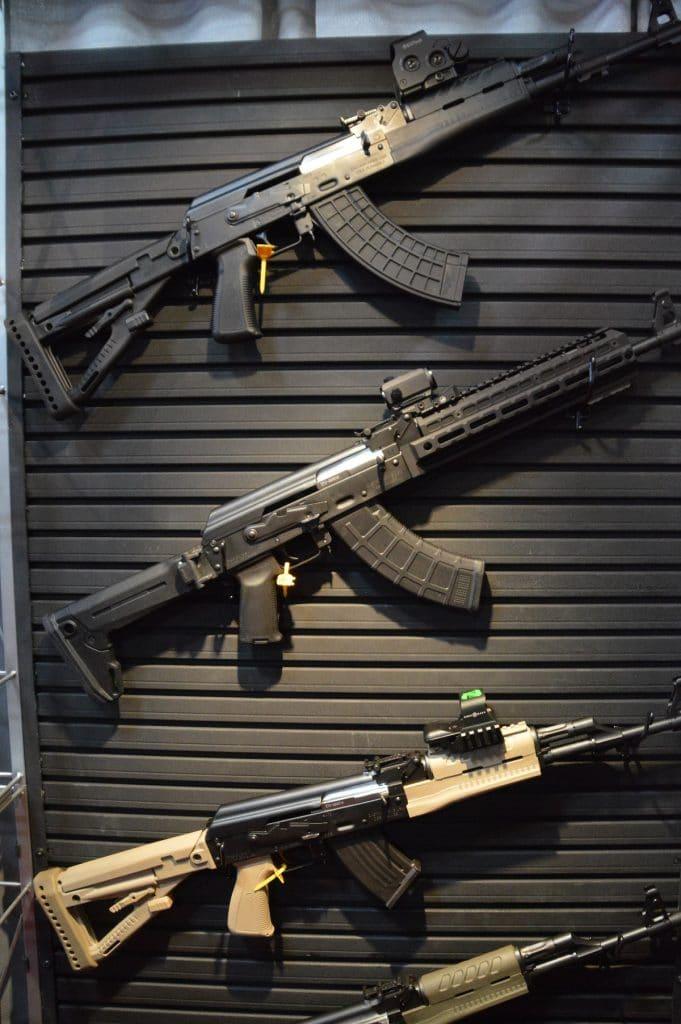
According to gun industry trade groups, between 1990 and 2016, some 4.6 million modern sporting rifles– largely AK variants– were imported to the U.S. from overseas, proving the land of Coca-Cola and apple pie to be the world’s hungriest consumer for the rifle.
However, after 1994 these guns required “Section 922R compliance” which meant they had to be imported in a “sporting” configuration and then reworked with a variety of U.S-made parts that ensured the firearm went on the market here with no more than 10 of 20 key components coming from overseas.
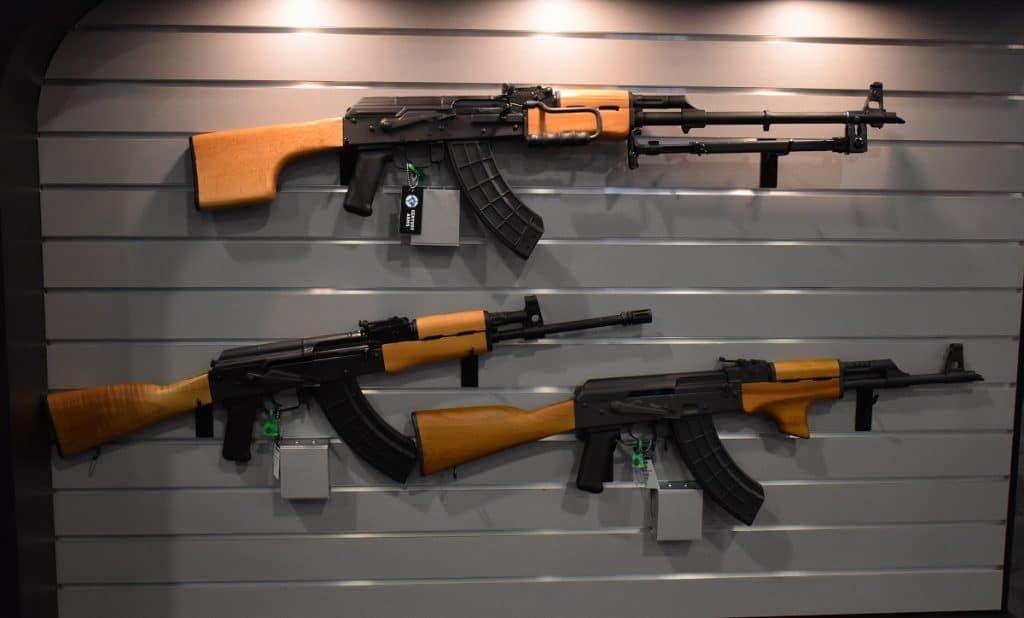
As this sometimes required a lot of work and yielded a growing industry in American-made AK parts, it was only a matter of time before all-U.S.-produced Kalash hit the market.

By 2014, with Russia eliminated from the import list due to sanctions over Moscow’s invasion of Ukraine, so-called Yankee AKs started to become more prevalent from companies like I.O and Century Arms, giving the American AK 47 its day in the sun — for better or worse.
Milled vs. Stamped: Which Type Should You Choose?
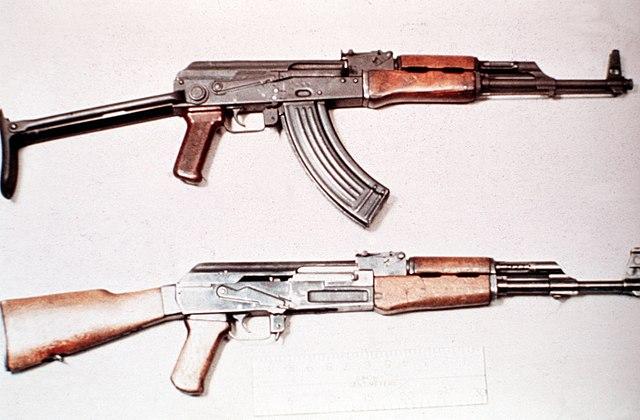
Quick Comparison Overview
In general, there are two ways to make an AK-47: milling and stamping. A milled receiver starts with a block of metal that is machined into the required specifications. Here’s the gist of the differences:
| Specification | Milled Receiver | Stamped Receiver |
|---|---|---|
Starting Material | Solid steel billet (8-10 lbs) | Sheet steel (1.0-1.5mm thick) |
Manufacturing Time | 4-6 hours machine time | Minutes with proper tooling |
Weight | 3-4 lbs (receiver only) | 1.5-2.5 lbs (receiver only) |
Strength | Monolithic even stress distribution | Strong but stress concentrated at joints |
Accuracy Potential | 0.25-0.5 MOA advantage | Excellent when properly built |
Durability | 100K+ rounds (Battlefield Vegas data) | ~100K rounds under extreme use |
Cost | 3-4x higher manufacturing cost | Lower cost economies of scale |
Balance Point | Rearward (more stable) | Forward (more maneuverable) |
Fatigue Resistance | Gradual wear over time | Can flex reducing stress peaks |
Parts Availability | Limited premium pricing | Widely available lower cosputs |
Manufacturing Process Deep Dive
Milled Receiver Construction: The milled receiver process begins with a solid steel billet, typically 4140 or similar steel, weighing approximately 8-10 pounds before machining. Using computer-controlled milling equipment, manufacturers remove roughly 70% of the original material, leaving a receiver that weighs 3-4 pounds when completed. This subtractive manufacturing process creates a monolithic structure with consistent material density throughout.
The machining process requires multiple setups and can take 4-6 hours of machine time per receiver, explaining the higher cost. Critical areas like the magazine well, trigger guard, and trunnion mounting points are machined to precise tolerances, typically within 0.002 inches. The result is a receiver with superior dimensional stability and strength characteristics that can withstand extreme stress without deformation.
Stamped Receiver Manufacturing: Stamped receivers begin with sheet steel, typically 1.0-1.5mm thick, that undergoes a complex forming process involving multiple dies and presses. The steel must be carefully heat-treated to achieve the proper balance of strength and formability. The forming process creates stress concentrations at bend points, which manufacturers address through careful engineering of bend radii and material thickness.
In the history of the AK-47, both milling and stamping have been used extensively.
For example, early, mass-produced AK-47s variants used milled receivers, but the Soviets found them too expensive and time-intensive to produce. Later models (for example, the AKM) switched to stamped receivers.
Besides weight, the main difference a user might notice between a milled and a stamped gun, assuming both are made well, is in the number of rivets. Because stamped guns do not have large blocks of metal where the front and rear trunnions are, those have to be riveted into place.
That’s one spot to check for quality: if the rivets look good, sit flush on the receiver, and have no play in them, then your stamped AK is likely good to go. Neither milled nor stamped guns are the final work in AK manufacturing, and at the user level, the most significant difference you would be likely to notice is the weight.
If a particular rifle has the features and performance that you like, then the construction of the receiver is of secondary concern. As always with the AK, the main goal is to establish a general story of the rifle you’re looking at to determine its quality.
Performance Comparison Table
| Performance Factor | Milled Advantage | Stamped Advantage | Real-World Impact |
|---|---|---|---|
Accuracy | Superior dimensional stability | Adequate for combat use | 0.25-0.5 MOA difference |
Recoil Management | Better mass distribution | Lighter less fatiguing | Preference varies by user |
Rapid Fire Control | More stable platform | Better maneuverability | Depends on shooting style |
Extended Use | Less fatigue from weight | Easier to carry/transport | Mission-dependent choice |
Maintenance | Fewer stress points | More flexible self-relieving | Both very reliable |
Customization | Limited options available | Wide aftermarket support | Stamped clearly winsRetryClaude can make mistakes. Please double-check responses. |
Structural Engineering Analysis
Stress Distribution Patterns: Milled receivers distribute stress more evenly throughout the structure due to their monolithic construction. The continuous material flow eliminates stress concentration points that can develop at welds or riveted joints. During firing, the bolt carrier’s rearward impact distributes across a larger area, reducing peak stress values.
Stamped receivers concentrate stress at specific points, particularly where the front and rear trunnions attach to the sheet metal receiver. The riveted joints create discrete load transfer points that must be engineered carefully to prevent failure. However, properly designed stamped receivers can actually exhibit superior fatigue resistance in some applications due to their ability to flex slightly under load, reducing stress peaks.
Start Here: What’s Your Primary Use?
Precision/Accuracy Focus?
- Yes → Consider Milled (Arsenal SAM7, quality builds)
- No → Continue to next question
Budget Under $1,200?
- Yes → Stamped (PSA GF3, WASR-10, Zastava M70)
- No → Either option viable
Weight Matters for Your Use?
- Yes → Stamped (maneuverability, carry comfort)
- No → Either option acceptable
Plan to Customize/Modify?
- Yes → Stamped (better parts availability)
- No → Either option works
Collecting/Investment Interest?
- Yes → Milled (better value retention)
- No → Stamped for pure utility
Modern Manufacturing Reality
Bottom Line: The milled versus stamped debate often generates more heat than light. Both construction methods can produce excellent rifles when executed properly. Modern manufacturing has largely eliminated the practical differences for typical civilian use. The choice should be based on:
- Budget constraints (stamped wins for value)
- Intended use (precision vs. dynamic shooting)
- Personal preferences (weight, feel, aesthetics)
- Long-term plans (customization, collecting)
Rather than focusing on theoretical superiority, shooters should prioritize proper execution by reputable manufacturers, regardless of construction method. A well-built stamped receiver from Zastava or PSA will outperform a poorly executed milled receiver every time.
Both types can serve you well for decades. Choose based on your specific needs, budget, and preferences rather than internet debates about theoretical superiority.
Buyers Guide
1. How to Spot a Quality AK (And Avoid the Duds)
With any firearm, the overall quality of the build can make or break your shooting experience. It’s especially true with the AK-47. A well-done AK is a reliable gun that will perform well above most people’s expectations and will likely last a lifetime, assuming some essential maintenance.
On the other hand, a poorly built AK is unreliable and a danger to its user.
In the United States, the AK received a relatively poor reputation for quality, particularly in the later years and aftermath of the Cold War.
This reputation was due, in large part, to the fact that most AK47s did not come into the US whole. Instead, due to a section of federal firearms law known as 922(r), most of the rifles came into the country piecemeal.
These were either “sporter” versions of the AK (with different magazine wells, stocks, etc.) or came in as parts kits (that would then be assembled by the importer or by someone else entirely).
Therein lies the problem. A particular rifle may have, as the manufacturer listed on the receiver, a company that has been making quality AKs for decades. That same rifle may have come into the US as a box of parts in the 1990s or early 2000s, then assembled by someone who has never built an AK.
This inconsistency led to market uncertainty, with end-users struggling to make sense of sources for authentic, reliable AK47s. Things are much better now, thankfully.
While many of the duds from earlier days are still floating around local gun stores and shows, there are many better options off the shelf now than there were a decade ago.
There are several reliable builders of foreign-produced AKs here in the states. Two significant companies — Palmetto State Armory and Kalashnikov Concern — are producing them right here in the USA.
Generally, buying one of these new AKs is an excellent option for people new to the platform, as they come with a phone line that will still ring and a warranty.
But in regards to older rifles, it’s best to determine the gun’s history to make sense of its build and its potential for trouble.
2. Barrel Length: Legal, Practical, and Performance Considerations
Although barrel length itself is not an indicator of quality, there are some considerations you should keep in mind when buying an AK.
The first are the legal ramifications: in the US, any barrel under 16” makes the rifle it’s on a short-barreled rifle, or SBR, which requires an ATF tax stamp to own legally.
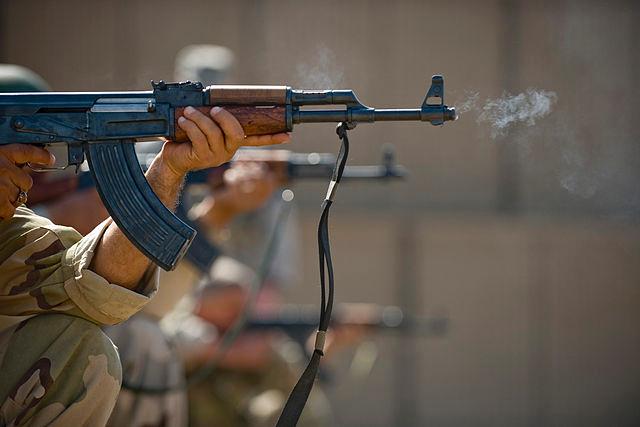
An AK pistol — with a decidedly shorter barrel — is certainly available, but you’ll be in brace territory (a familiar landscape for anyone who runs an AR pistol).
No stocks or forward handgrips allowed on an AK pistol — making them fun but challenging to use much beyond 50 yards unless outfitting with something like an SB tactical brace.
Additionally, some states have different laws for handgun purchases as they do rifles, so consult a local expert if you have any questions about whether an AK pistol is right for you.
Therefore, your least legal headache will come from a rifle with a barrel over 16”. Second would likely be a pistol that has a barrel under 16”. The most difficult to own — in terms of time, money, and paperwork — would be a short-barreled rifle (but for some folks, the legal headache is more than worth it).
The next thing to consider is effectiveness. Since we’re talking about the AK rifles, we’re working with 7.62×39 caliber ammunition. There are AK platforms in other calibers, ranging from 9mm to 12 gauge, but in terms of ballistics, let’s keep things simple and refer to the original caliber of the AK-47.
Generally speaking, the more barrel length a firearm has, the higher the muzzle velocity, thus increasing range and accuracy — up to a point. You’re looking for maximum powder burn. For example, a six-foot barrel won’t add any performance advantage for anything shy of a cannon round.
For the AK-47, reducing the barrel length from 16.6” to 7.5” reduces the velocity substantially. Much like the AR’s 5.56 NATO cartridge, a shorter barrel offers less muzzle velocity than a longer one.
From there, it’s up to you to decide what you plan on doing with your AK. If it’s for home defense or close-quarters work, then a short barrel with less velocity can be just fine.
If, on the other hand, you’re looking for maximum range out of the cartridge, then more barrel is what you’re looking for up to around 26 inches, which is what you’ll find on the Romanian military marksman rifle the PSL.
For an all-purpose AK, something with a 16-inch barrel is likely the easiest to own legally and will offer the most flexibility.
3. Customizing Your AK: Furniture and Accessories Guide
For most of us, who are coming to the AK from the AR world, the furniture on an AK can seem a little complicated, less modular, and frustrating. In the neverending battle of AK vs. AR, the modularity of the AK, especially early models, is often called into question.
These days, however, there are many options to get the most out of your Kalash.
It’s worth understanding that there are nuances to the purpose of certain AK design decisions — take the classic buttstock. The original “Warsaw Pact”-length AK stock is, for many people, short.
The design wasn’t due to some desire to conserve resources but rather to work well with heavy winter clothing and body armor. The Soviets spend six months of the year in winter.
Toss on a parka and plate carrier, and the stock length starts to make more sense. Of course, keeping the Germans at bay in Siberia may not be your use case.
The AK is not like the AR, where any Mil-Spec part is very likely to fit onto any Mil-Spec AR. Given that AKs have been produced by dozens of countries over six decades, the tolerances for what might be considered the “same” part can vary.
Thus, there are types of furniture that will fit on specific series of guns, but not on others.
To ensure compatibility with what you want, look to producers like Midwest Industries and Krebs, who manufacture AK furniture for different Kalash series.
This helps to ensure you’re getting a product made specifically for your AK build, and you’ll often get solid add-ons like M-Lok slots, top, and quad-rails. Of course, never hesitate to ask questions in forums or from folks selling AKs.
One workaround is only to consider modern production AKs made in the US, which tend to be very clear about what will and won’t fit and supported by the manufacturer.
You also may need to do a little bit of hand fitting. If your rifle was made in 1989, brought in as a parts kit in 2009, and you get a gas tube from lord knows when you might have to file a little here and shim a little there to get things fitting just right.
With some simple hand tools and a little bit of patience when looking for good advice online, this can certainly be done. One last thing with furniture is that the stock you can use depends on the receiver. Some receivers are designed to work with certain folding stocks and have a latch on the side of the receiver and a differently shaped rear trunnion.
Products like Magpul’s Zhukov Side Folder are designed to accommodate these broad tolerances but YMMV depending on your AK model.
The Zhukov is also telescopic, so you get significantly improved ergonomics and room for a cheek riser — plus the side-folding action assists with storage and transport.
For those interested in using an AR buffer tube/stock feel, the Vltor RE-47 AK Modstock adaptor lets you mount an M4 collapsible buttstock to your AK, so you’ll get adjustability and familiarity all in one go.
Of course, for those uninterested in hunting down the right bits and bobs, the best way to get one that best meets your needs is to find one that already has furniture that you like (or at least something very close to that); you’ll spend a minimum of your time, effort and money trying to track down parts that can be sometimes hit or miss in terms of supply or compatibility.
Section 922(r) Compliance: Real Talk
The Import Reality
If you’ve wondered why that beautiful Serbian Zastava or Romanian WASR doesn’t come exactly as it left the factory overseas, you can thank Section 922(r) of federal firearms law. This regulation fundamentally shapes how AK rifles enter the American market and affects nearly every imported rifle you’ll encounter.
Understanding 922(r) isn’t just academic—it explains why your imported AK has certain features, why some parts look different from military photos, and why the American AK market developed the way it did.
What 922(r) Actually Says
Section 922(r) prohibits the assembly of certain semi-automatic rifles using more than 10 imported parts from a list of 20 specified components. The law was designed to prevent circumvention of import restrictions by bringing in rifles as parts kits, then reassembling them domestically.
For AK rifles, the 20 parts list includes critical components like the receiver, barrel, bolt, bolt carrier, trigger group, gas piston, and various furniture pieces. To legally import and sell an AK rifle, importers must ensure no more than 10 of these components are foreign-made.
The 20 Parts List (for rifles):
- Frames, receivers, receiver castings, forgings or stampings
- Barrels
- Barrel extensions
- Mounting blocks (trunnions)
- Muzzle attachments
- Bolts
- Bolt carriers
- Operating rods/gas pistons
- Trigger housings
- Triggers
- Hammers
- Sears
- Disconnectors
- Buttstocks
- Pistol grips
- Forearms, handguards
- Magazine bodies
- Followers
- Floorplates
- Springs
How This Affects Your AK
Import Configuration Requirements: Most foreign AK rifles must enter the country in “sporting” configuration, which typically means:
- Fixed stock instead of folding
- Different pistol grip
- Modified trigger group
- Hunting-style furniture
- Removal of bayonet lugs or threaded muzzles
Post-Import Conversion: Once imported, companies like Century Arms, Atlantic Firearms, and others convert these rifles to standard AK configuration by replacing foreign parts with American-made components. This process requires careful parts counting to maintain 922(r) compliance.
Common Compliance Strategies:
- Replace trigger group with American parts (3-4 components)
- Install US-made furniture (buttstock, pistol grip, handguard)
- Use American-made muzzle devices or gas pistons
- Some rifles use US-made magazines to achieve compliance
Real-World Examples
Zastava ZPAP M70: Zastava imports the receiver and barrel from Serbia, then adds American-made furniture, trigger components, and other parts to achieve compliance. The result maintains the rifle’s Serbian quality while meeting US legal requirements.
Century Arms WASR-10: These Romanian rifles arrive with single-stack magazine wells and sporting furniture. Century converts them by opening the magazine well to accept standard magazines and installing US-made components to maintain compliance.
Arsenal Rifles: Bulgarian Arsenal rifles undergo similar conversion, with American-made triggers, furniture, and other components replacing original military parts.
Why This Matters to You
Parts Compatibility: 922(r) compliance affects which parts you can legally install. Adding too many foreign parts to a rifle could theoretically create a compliance violation, though enforcement typically focuses on manufacturers rather than individual owners.
Quality Considerations: Some American-made compliance parts may not match the quality of original military components. Research replacement parts carefully, as budget compliance parts can affect reliability and performance.
Modification Planning: If you plan to modify your AK, understanding which parts count toward the 10-part limit helps ensure you stay compliant. Many enthusiasts replace compliance parts with higher-quality American alternatives.
The Gray Areas
Enforcement Reality: While 922(r) violations are technically federal crimes, enforcement against individual owners is extremely rare. The ATF typically focuses on manufacturers and importers rather than pursuing end users.
Parts Counting Confusion: The law’s complexity creates confusion about what counts as “assembly” and which parts are actually regulated. Legal opinions vary on edge cases, and the ATF’s interpretations have evolved over time.
Documentation Requirements: Neither manufacturers nor owners are required to maintain detailed parts records, making compliance verification difficult in practice.
Domestic Manufacturing Impact
922(r) inadvertently created the American AK manufacturing industry. As compliance costs increased and import restrictions tightened, companies like Palmetto State Armory and Kalashnikov USA began producing entirely domestic rifles that bypass these regulations entirely.
Advantages of Domestic AKs:
- No 922(r) compliance requirements
- Can include any desired features
- Support American manufacturing
- Often include better warranties and support
Import Advantages:
- Authentic military heritage
- Proven manufacturing experience
- Often superior fit and finish
- Historical significance
Current Market Impact
Recent sanctions and import restrictions have made 922(r) compliance even more critical as the supply of foreign parts and rifles diminishes. This has driven increased interest in domestic manufacturing and pushed up prices for compliant imports.
Post-2014 Reality: With Russian imports banned and other sources restricted, the remaining importers must work harder to source compliant parts and maintain reasonable pricing. This has benefited domestic manufacturers while creating challenges for traditional import houses.
Practical Advice
For New Buyers: Don’t let 922(r) complexity deter you from AK ownership. Reputable dealers handle compliance issues, and quality imported rifles perform excellently despite the regulatory requirements.
For Modifiers: If you plan extensive modifications, consider starting with a domestic rifle that avoids 922(r) entirely. Alternatively, work with knowledgeable gunsmiths who understand compliance requirements.
For Collectors: 922(r) creates interesting variants and configurations not found elsewhere in the world. Some compliance-modified rifles have become collectible in their own right.
At The End of The Day
Section 922(r) represents the reality of importing military-style rifles into the American market. While complex and sometimes frustrating, the regulation has shaped a unique ecosystem of imported rifles modified for compliance and domestic manufacturers free from these constraints.
For most shooters, 922(r) compliance happens behind the scenes. Reputable importers and manufacturers handle the legal requirements, delivering rifles that perform excellently regardless of which parts come from which countries. Focus on finding a quality rifle from a trusted source rather than worrying about regulatory complexities you didn’t create.
The regulation’s most important practical effect is ensuring that serious AK enthusiasts understand why their rifles look the way they do and why the American AK market developed its particular characteristics. In a strange way, 922(r) has made the American AK market more diverse and innovative than it might have been under completely free importation.
Why Shoot an AK-47?
1. They’re fun!
While firearms are dangerous and you should, of course, always respect safety rules first and foremost, the biggest reason that I turn to the AK-47 is that they are a ton of fun to shoot regardless of your preferred shooting style.
Most human beings recognize the AK, so getting to shoot one, whether it’s the first time or the hundredth, will likely bring a smile to your face. 7.62×39 also delivers a pretty decent kick without beating up the shooter too much, which adds to the fun of the overall experience. Shooting is fun in general, but the AK makes it even more so.
2. …and easy to find
For a lot of AK shooters of various kinds around the world, it is their weapon of choice because it is extremely widely available.
It depends on how you slice it historically, but the AK platform and family of rifles is likely right up there with Mauser-action rifles in terms of sheer production numbers. If you’re on planet Earth, you’re probably within about fifty miles or less of an AK of some kind or another.
This availability means that it will show up in civilian and military hands all over the world, regardless of the intent of the user.
3. Ammo is cheap(ish)
Third, at least until recently, people shot AK-47s because steel-cased 7.62×39 was cheap and most AK mags are universal to the platform. Back in the good old days of the 2000s, it was possible to get imported ammunition from the Soviet era that still worked just fine, and shot reasonable good groups out of most rifles.
This, sadly, is becoming much less the case as a certain country where the AK and its cheap ammo came from has decided to not play nice on the international scale.
As sanctions and wars ramp up, the days of cheap AK ammo might be over, but, until recently, it was a major draw to the platform.
4. It’s iconic
For me, one of the bigger draws to most firearms is the story, and that’s especially true of the AK. Designed as a replacement for the submachine guns of WWII, the AK-47’s legacy of being made by a tank mechanic turned self-taught engineer makes it a major piece of 20th-century history.
Its iconic presence in video games, movies, and the flag of Mozambique makes the AK one of the most recognizable firearms out there, so I relish the opportunity to shoot one every chance I get.
An AK always has a major historical cool factor. Here in the US, a big reason to get into the AK is, simply put, that it’s not an AR.
I love ARs, don’t get me wrong, but at the end of the day, there are only so many handguards and plastic pieces you can put on a black rifle shooting .223 before your eyes start to wander.
Since the AK was not a domestic invention for us, it’s a little more interesting and uncommon to put together a tactical rifle that isn’t an AR design, and it’s ‘for that reason that a lot of people look into the platform in the first place.
Types of AK-47s
In true AK-47s, those firing 7.62mm, there are two major types worth talking about. First are those that have milled receivers: these are machined out of a single block for the receiver, making them heavier, more expensive, and perhaps marginally stronger than other types.
These are still made today, and were the first production type of AK-47 back in 1949.
Other AK models have stamped sheet metal receivers. If built and reinforced properly, these are great and have been the most commonly produced type of AK since Soviet adoption of the AKM.
If you see an AK on a battlefield today, it is almost certainly a stamped sheet metal variant.
The next type I want to talk about is not technically AK-47s, but rather AK74s. The 74 series, and now the new variants thereafter in Russian production, use the same mechanics as the 47s, but in a new, smaller caliber, the 5.45mm.
The new caliber was adopted after the Soviets saw the wisdom in smaller, flatter shooting 5.56mm, and presents a large deal of modernization in the AK platform that makes it, on a tactical level, nearly equal to its Western counterparts in the right hands.
Finally, in things that are not an AK, but are very AK-like, we’d like to give two examples of guns that I hold dear.
First is the VZ58, the Czech take on the AK concept. This gun fires the same round as the AK-47 and, from a distance, certainly looks like an AK, but it is not, in fact, an AK at all.
The Czechs always had a tense relationship with the USSR and thus did everything they could in order to maintain domestic arms production. Thus, the Czechs made their own take on the assault rifle concept and came up with a rifle that is fun to shoot, super reliable and looks just a little different than the other AKs at the range.
Taking a similar concept, the Israeli Galil likely resulted from the brief period wherein Israel worked somewhat closely with the Soviets and bought some AKMs. The Galil, in effect, is an AK design that has been heavily modified to work well in desert conditions and, allegedly, has a bottle opener built into the receiver.
Again, not an AK, but uses the same mechanical ideas.
Shortcomings
In 7.62mm, one major shortcoming of the AK platform is its range.
The relatively short but heavy bullet means that when compared to some of its contemporaries, such as .308 or even 5.56mm, the AK’s bullet runs out of steam a little bit earlier, especially when paired with short-barreled AK pistols.
Consider how many times in the past half-century AK-47s have gone up against those other calibers directly.
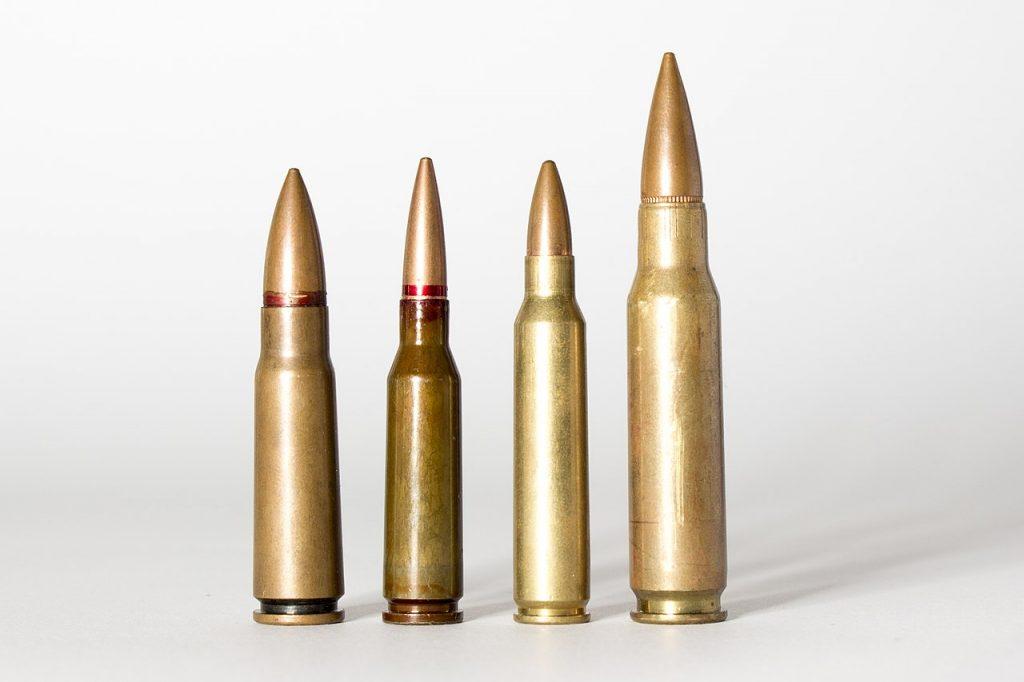
Having a lack of range can be a serious liability in a firefight. Good marksmen can engage out of 500m with an AK, but that is far from the norm.
The second is that here in the US, a lot of the older AKs floating around were assembled by importers who, if I am being honest, had no rightful idea what they were doing.
Bad rivets, sights that are miles off from correct, and other major fitment issues that can be dangerous were a lot more common than importers would like to admit. Luckily, there is a lot more competition in the important market now, and it is also possible to get a domestically manufactured AK that is probably built a lot more carefully than those that were smashed together in a warehouse.
Also, the native iron sights and sliding rear sight can be challenging for many users, and achieving anything approximating “exceptional accuracy” beyond a hundred yards will take some serious range time with the gun.
AK-47 Price Ranges
AK platform rifles used to be cheap, but, sadly, those days are over and I’d be highly skeptical of any rifle or pistol AK for sale for under $400.
At about $500, you can get reasonable if basic imports and some domestic rifles on sale brand new. For about double that, you can get some of the more desirable imports with your choice of tactical furniture.
At the $2000 or so mark, you can find a rifle that was put together by an excellent builder out or premium parts that is good for most tactical situations.
Who Uses the AK-47?
In short, just about everyone.
Militaries around the world, ranging from Latin America to Asia to Europe still make more than effective use of AK-pattern rifles of various kinds and calibers. It’s a great design and widely available new and used, so I don’t see this changing any time soon.
Similarly, irregular forces in all of the places I just listed, in addition to Africa and the Middle East, have been putting the AK-47 to good use for decades at this point. It is entirely possible that there are fourth generation users of the same rifle fighting in conflicts that have been going on for about sixty years. For the next few centuries, expect to see AK-47s popping up in conflicts. There are even places in Pakistan where people are making AK-47s by hand.
In places like the US and Canada, civilian and law enforcement shooters also choose the AK as their primary rifle. There’s an old urban legend that the Alaska State Troopers thought about adopting imported AK variants for a while due to their cold-weather performance, but evidence of this is a little on the thin side.
More Reading
- AK-47: Survival & Evolution of the World’s Most Prolific Gun, Marco Vorobiev
- The Gun, C.J. Chivers
- National Shooting Sports Foundation (MSR numbers)
- Shooter’s Bible, various editions incl Vol. 111: The World’s Bestselling Firearms
- Vickers’s Guide: AK Kalashnikov, specifically Vol. 1, Larry Vickers
- Dirck Halstead, A Sioux activist triumphantly brandishes his AK-47, 1973
- An AK created from a shovel
- TASS Russian News Agency
- Christopher Eger, Three pipefitters from Corvin Passage
- Jon Rydberg Section 922R Compliance, October 25, 2013
- Royal Armories, Avtomat Image
- AK Barrel Testing
Updated
Sign up for our newsletter
Get discounts from top brands and our latest reviews!

